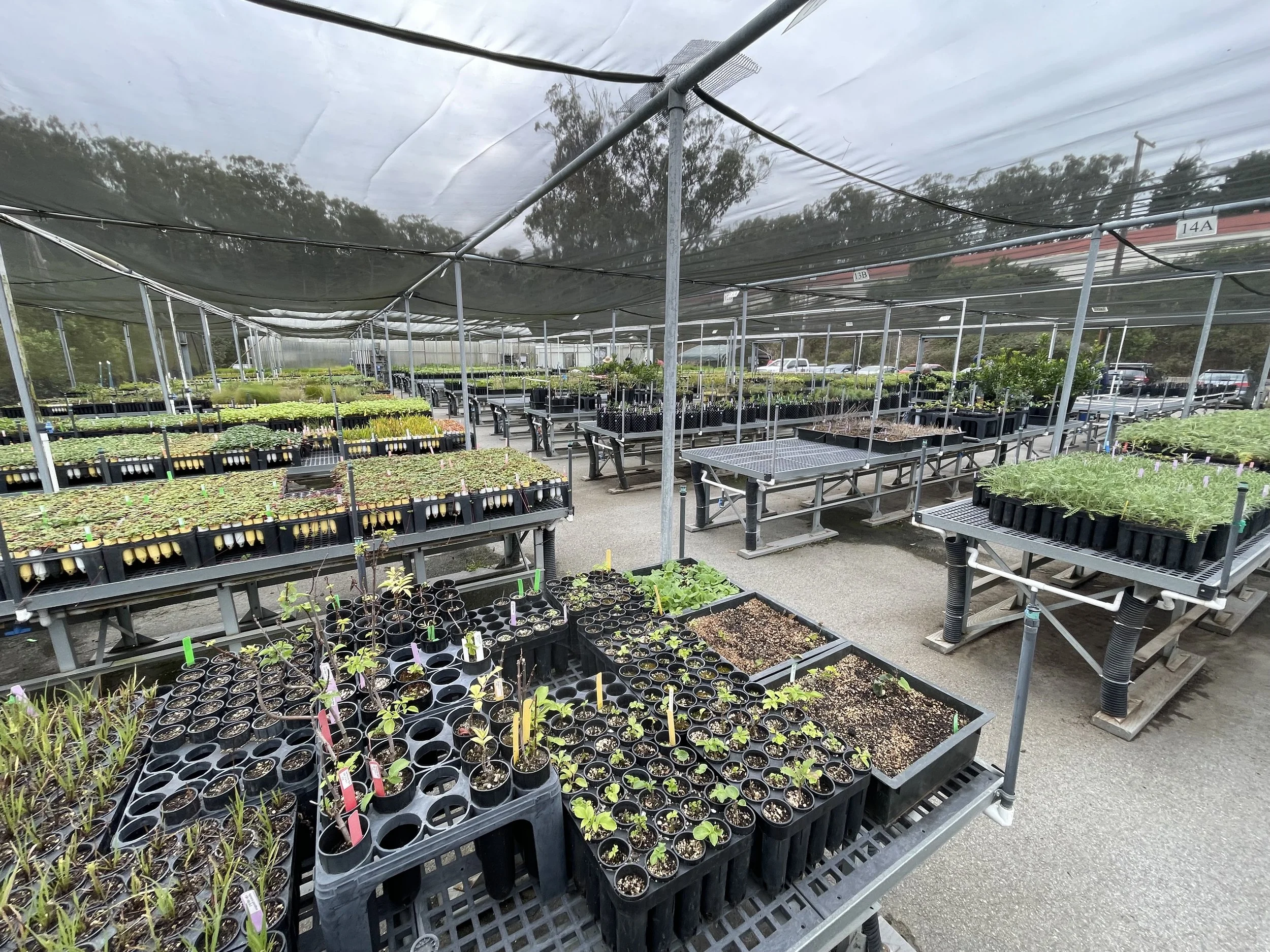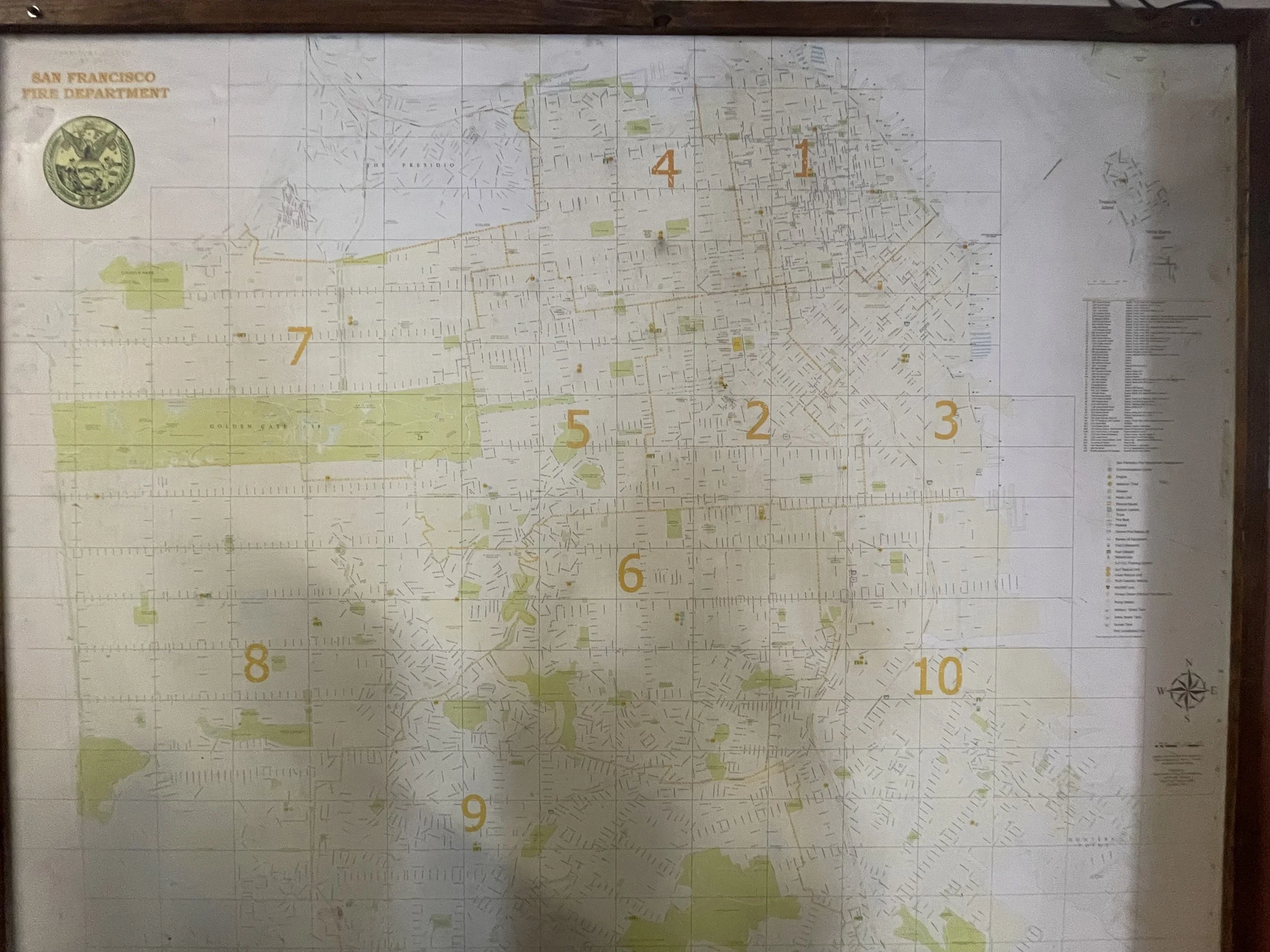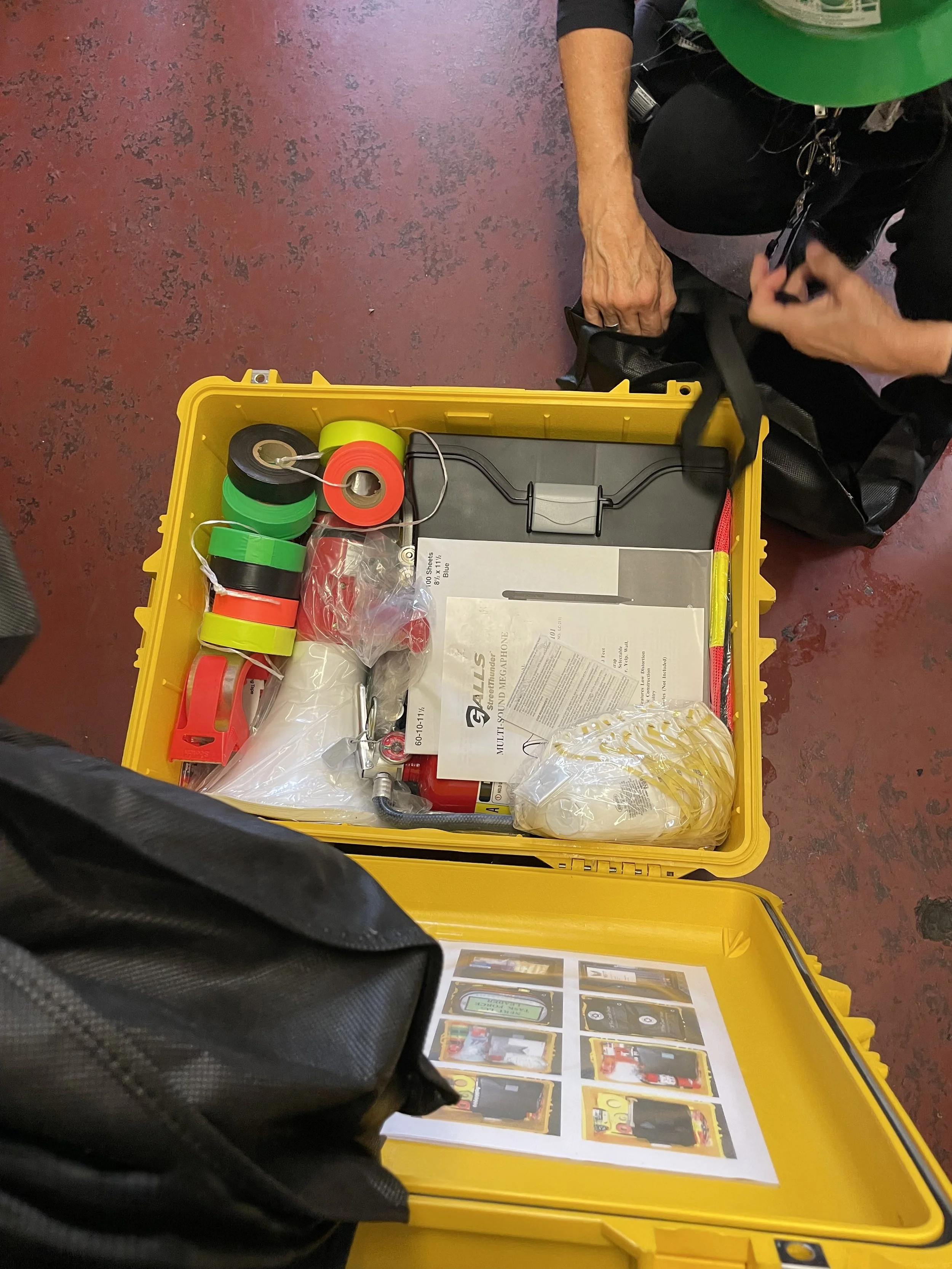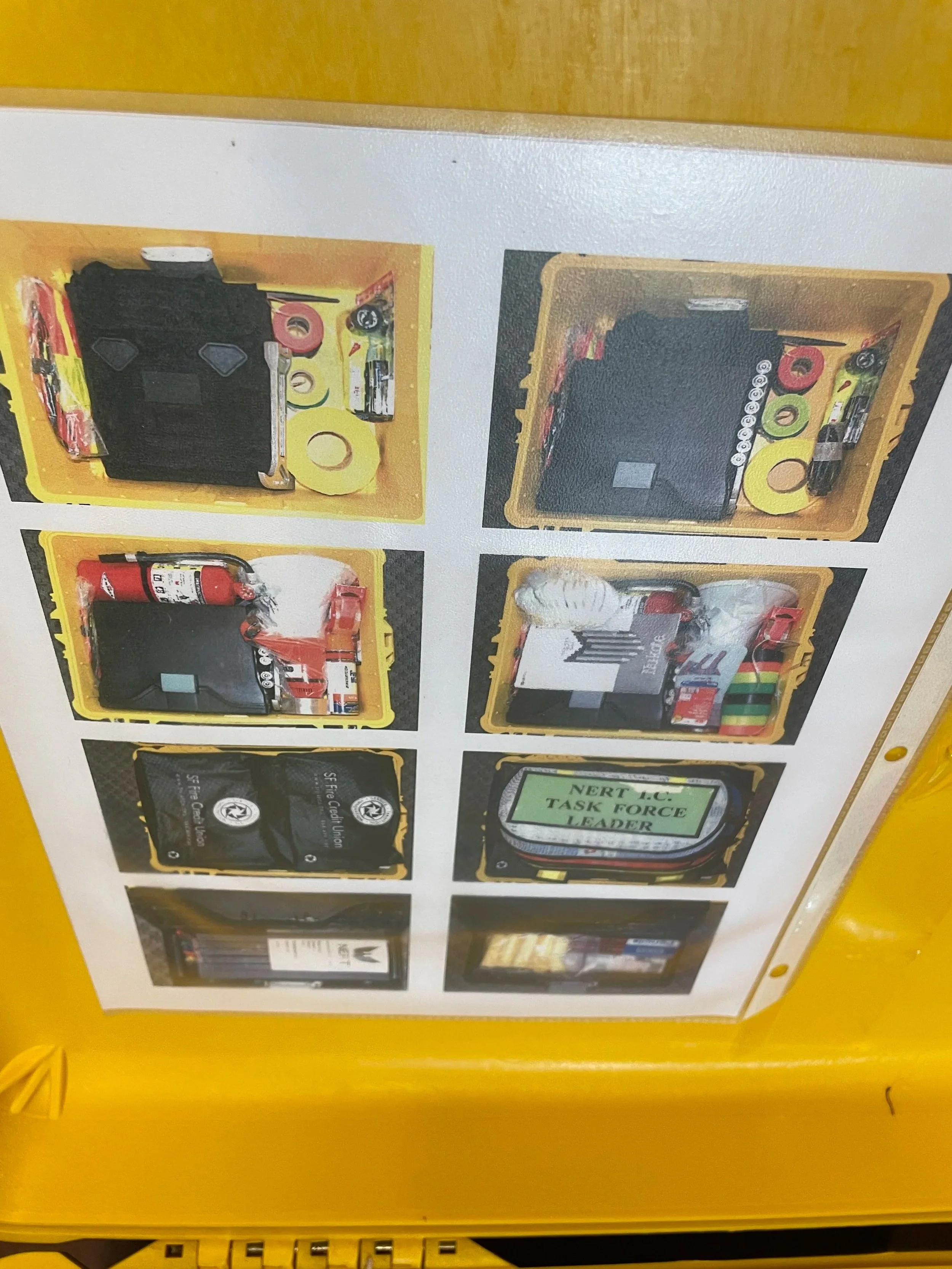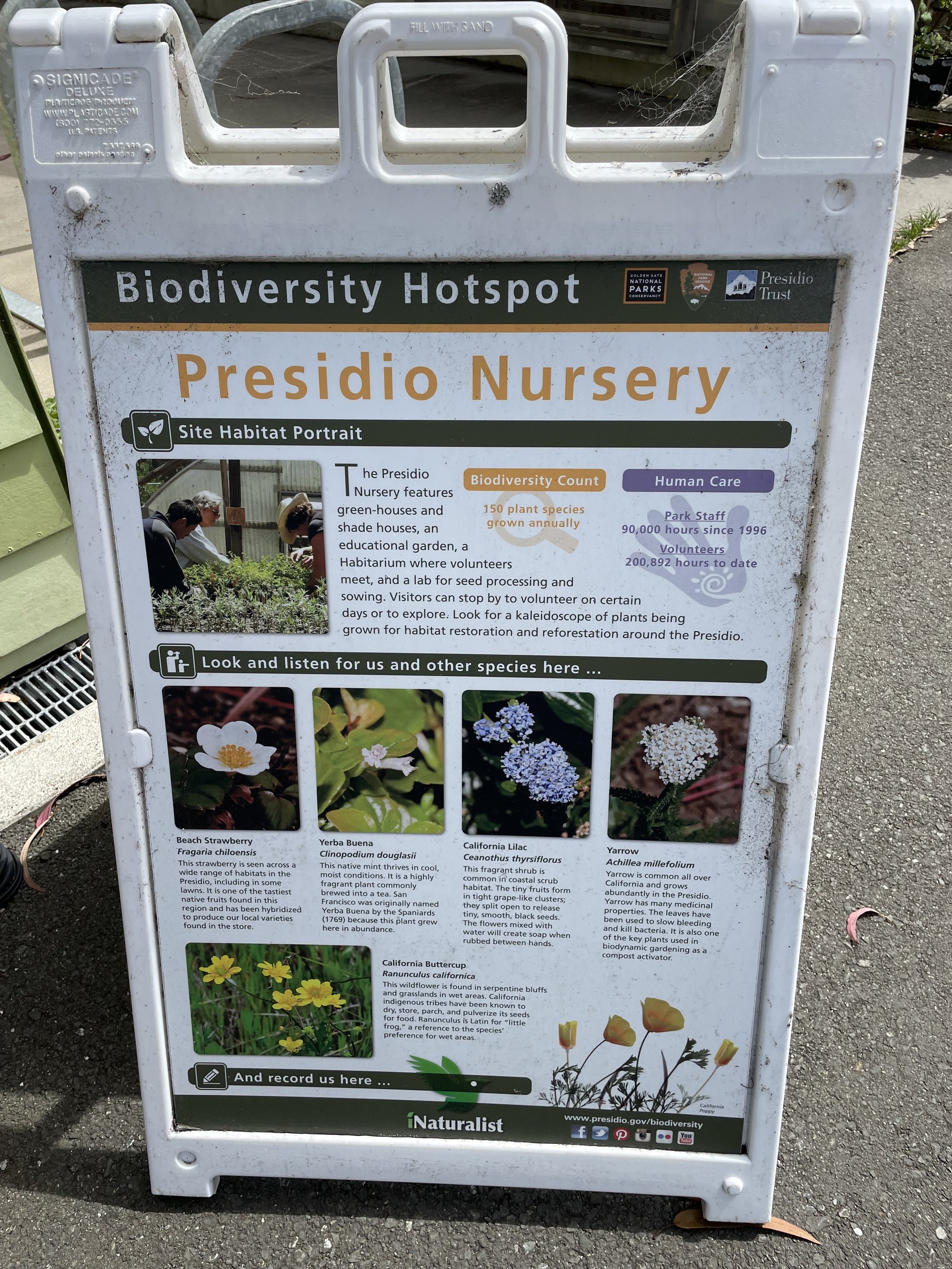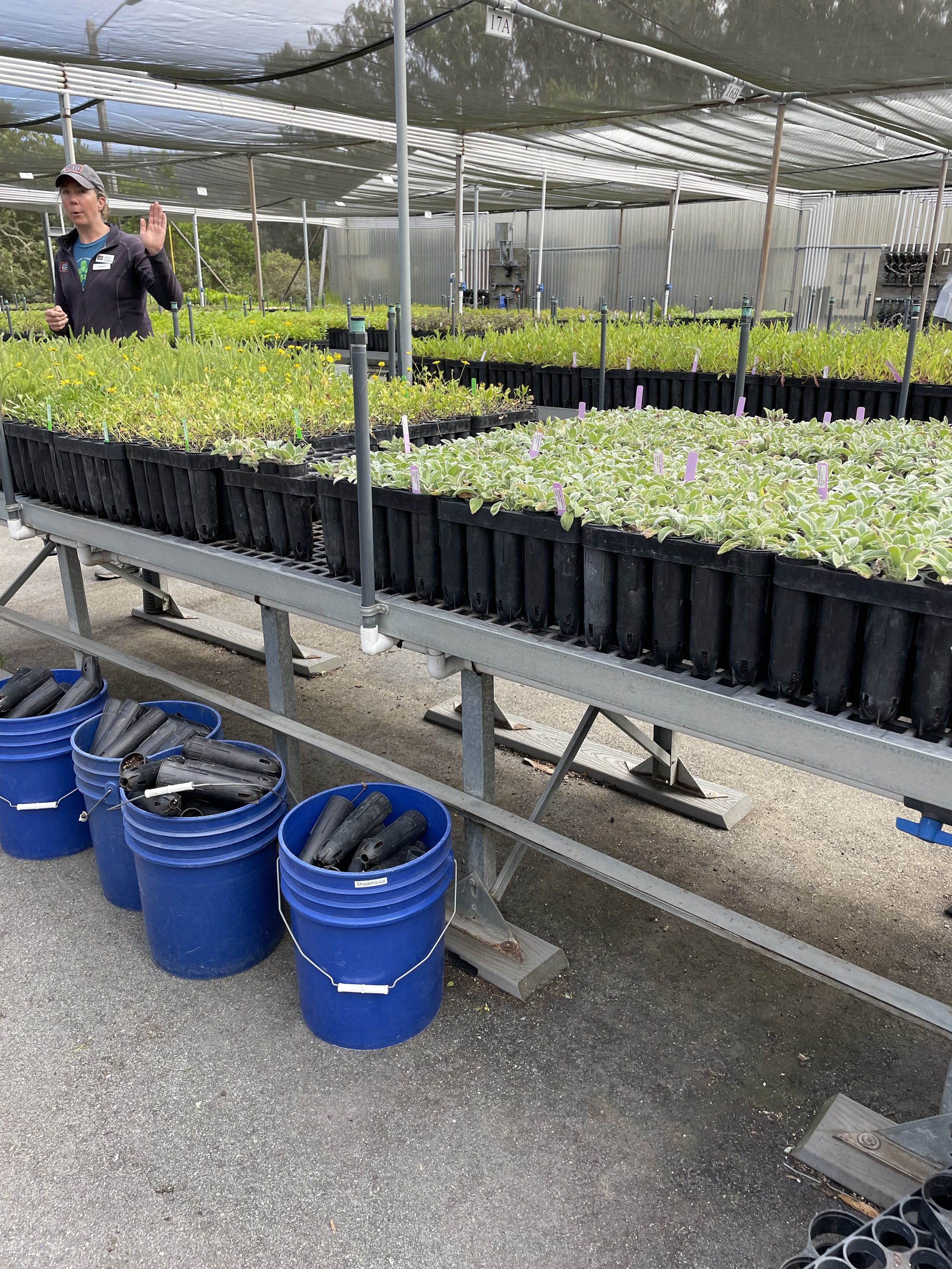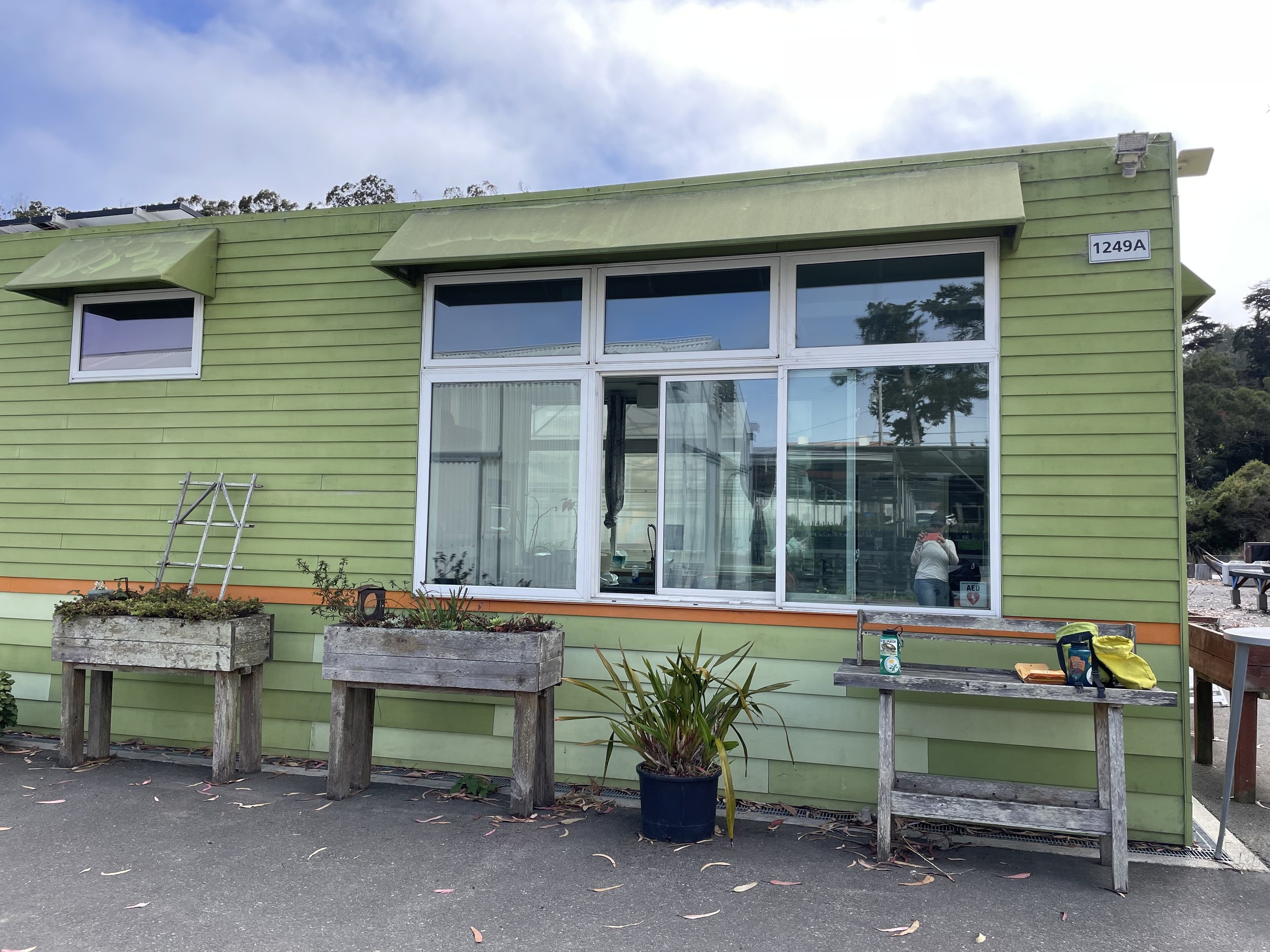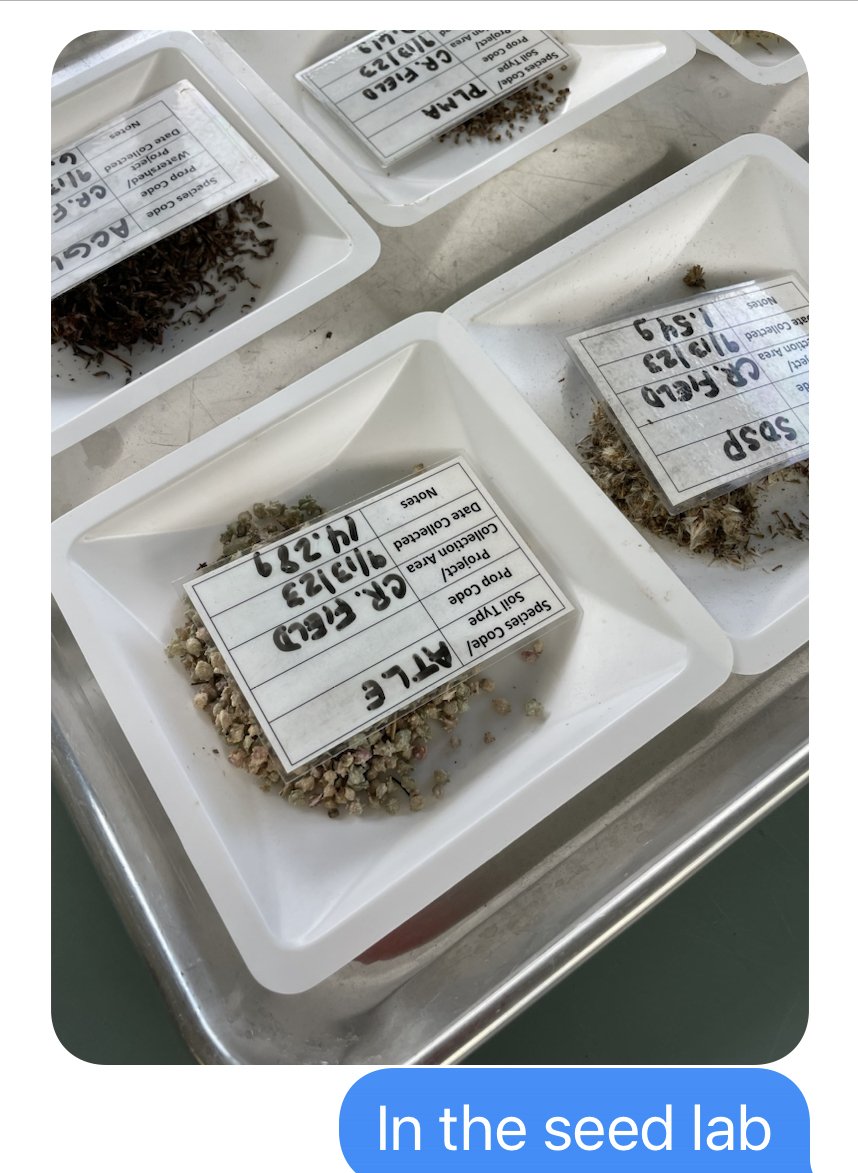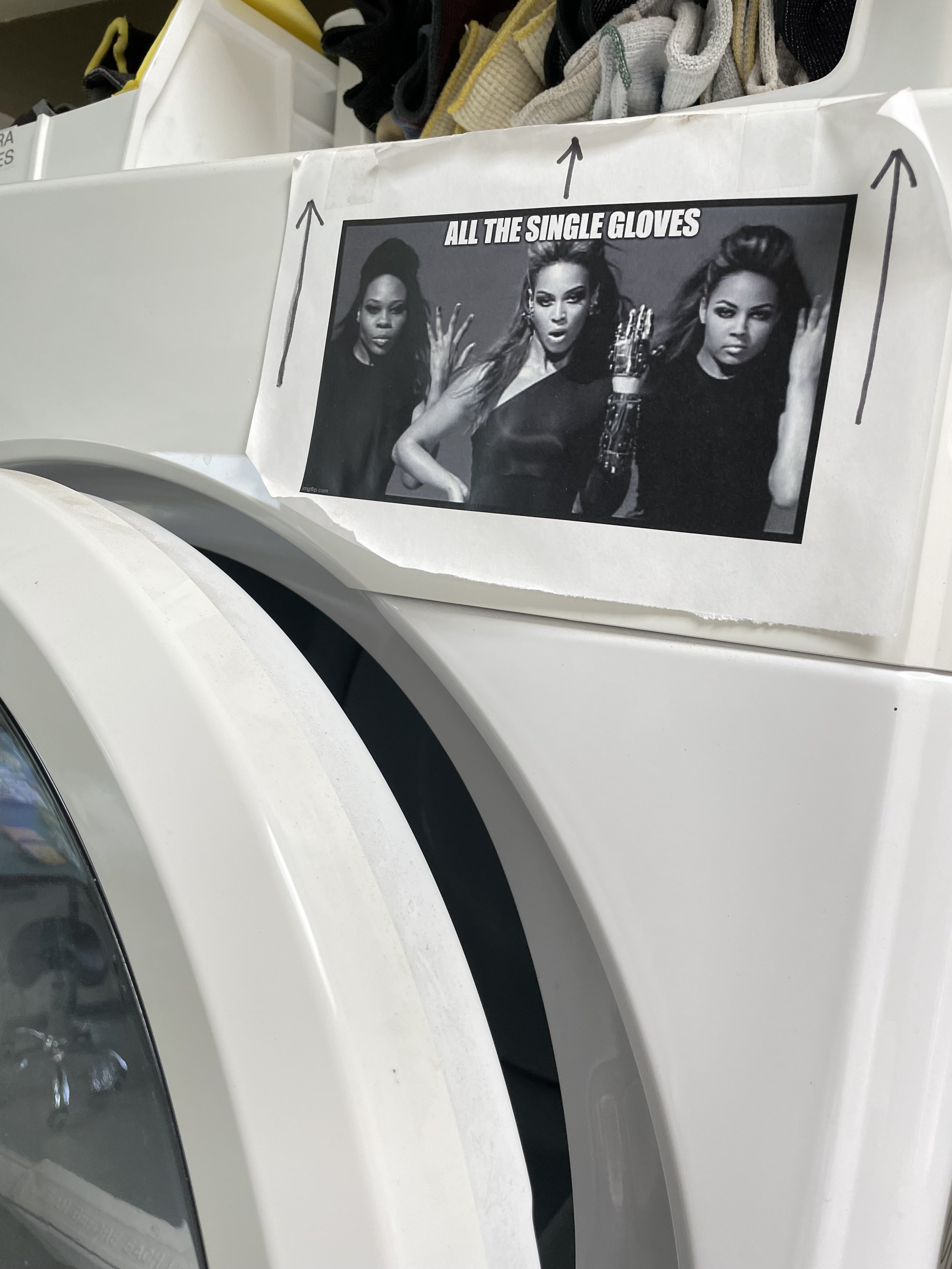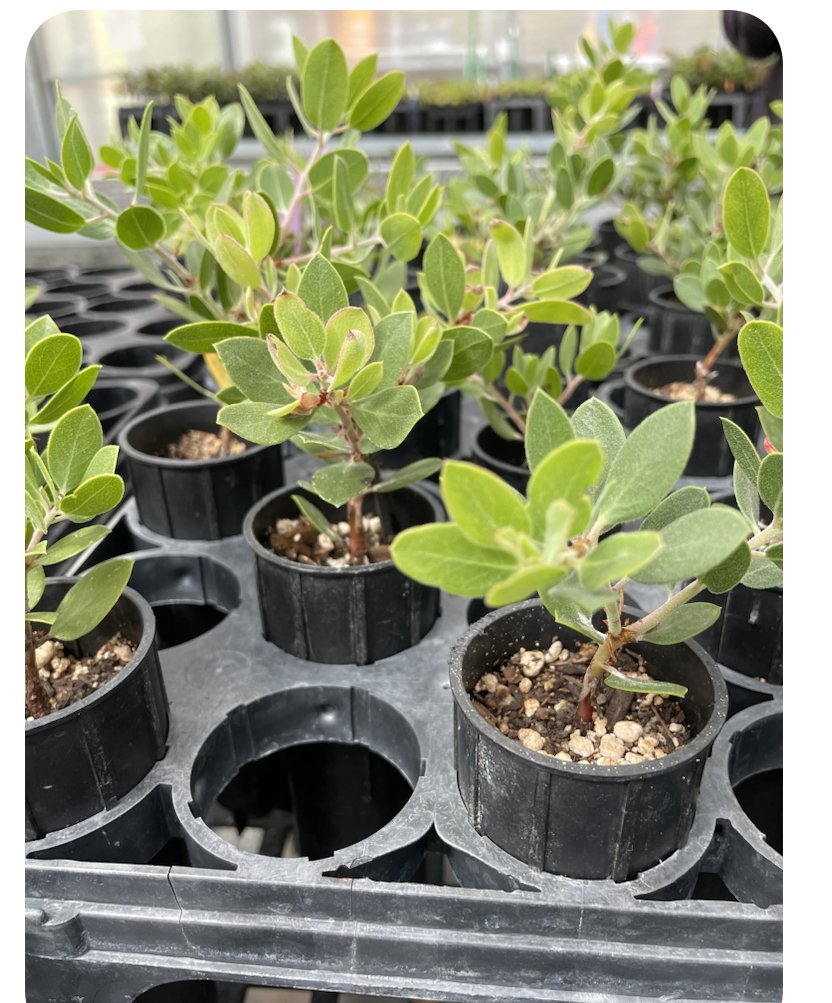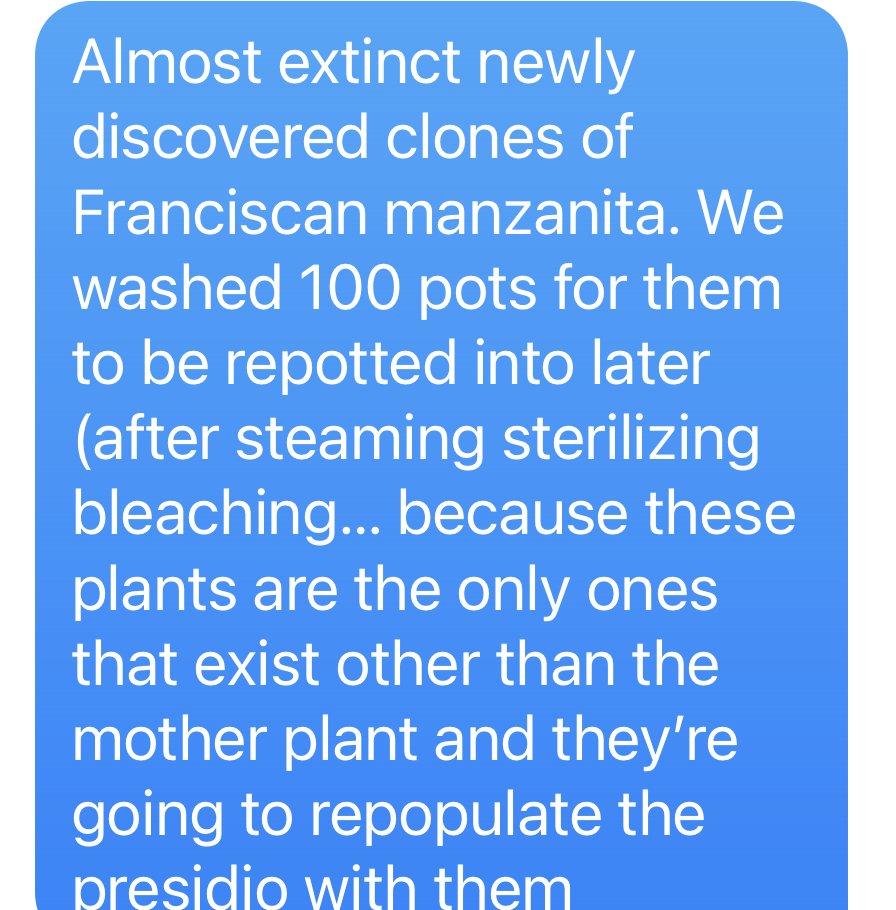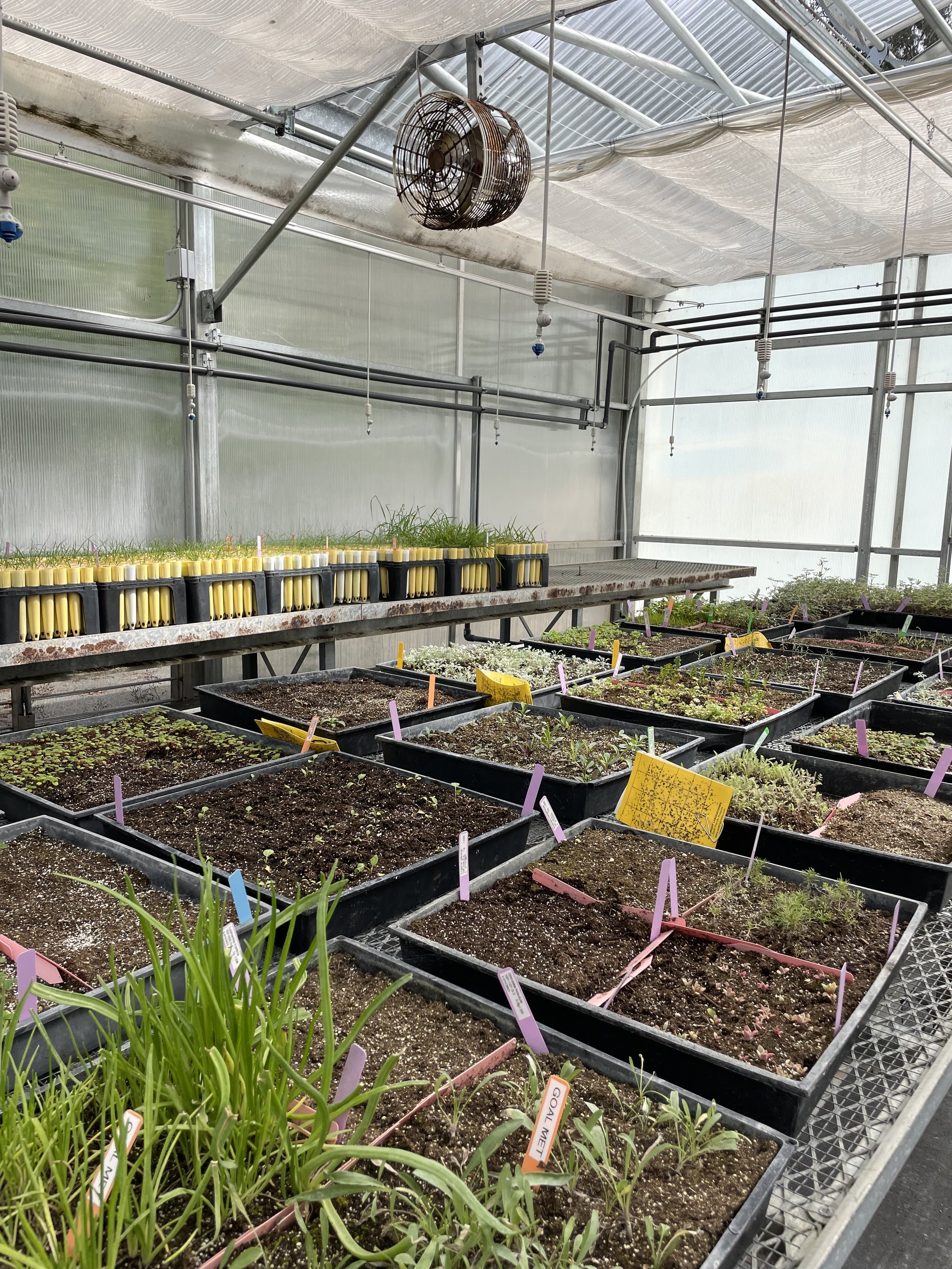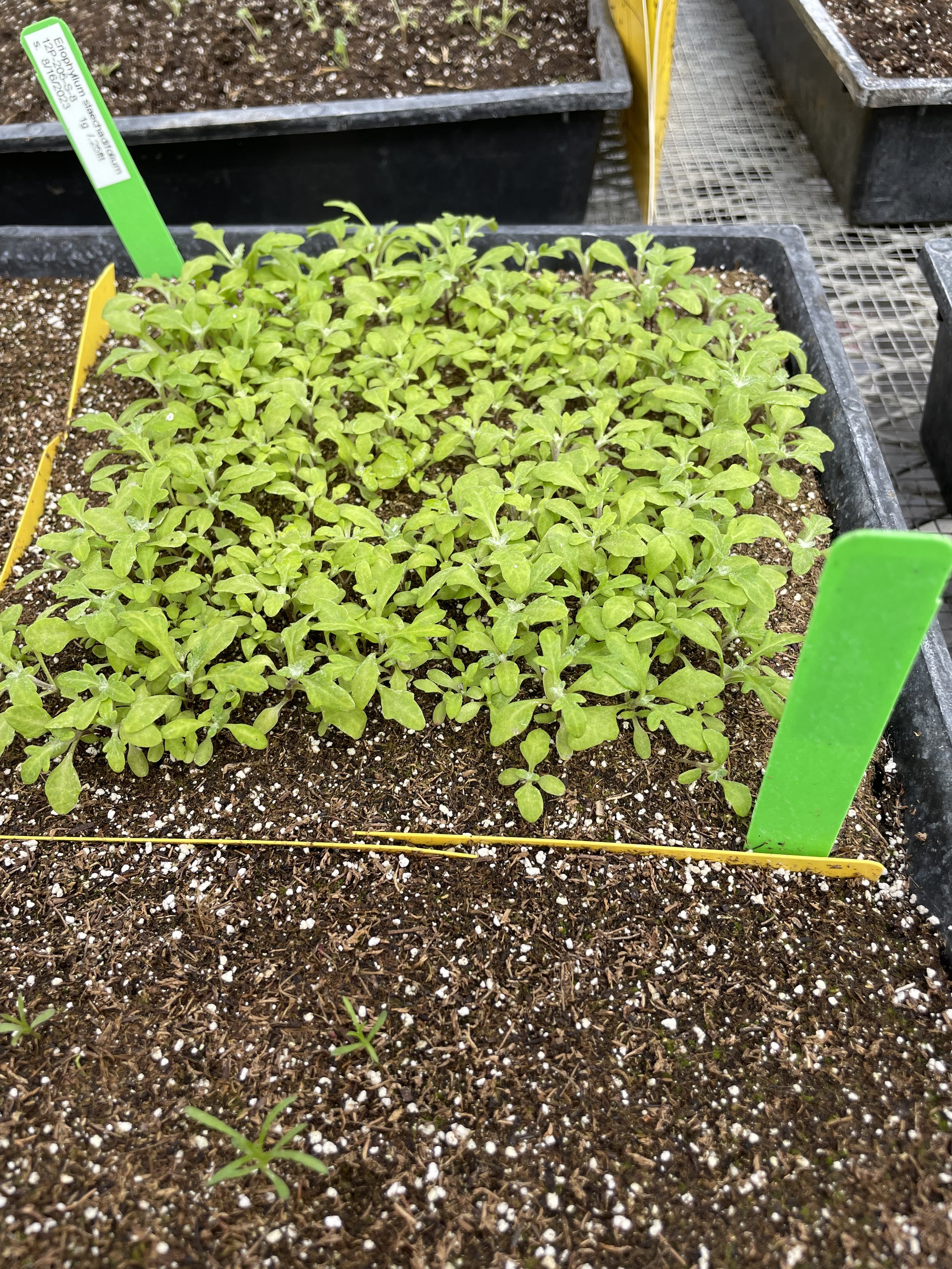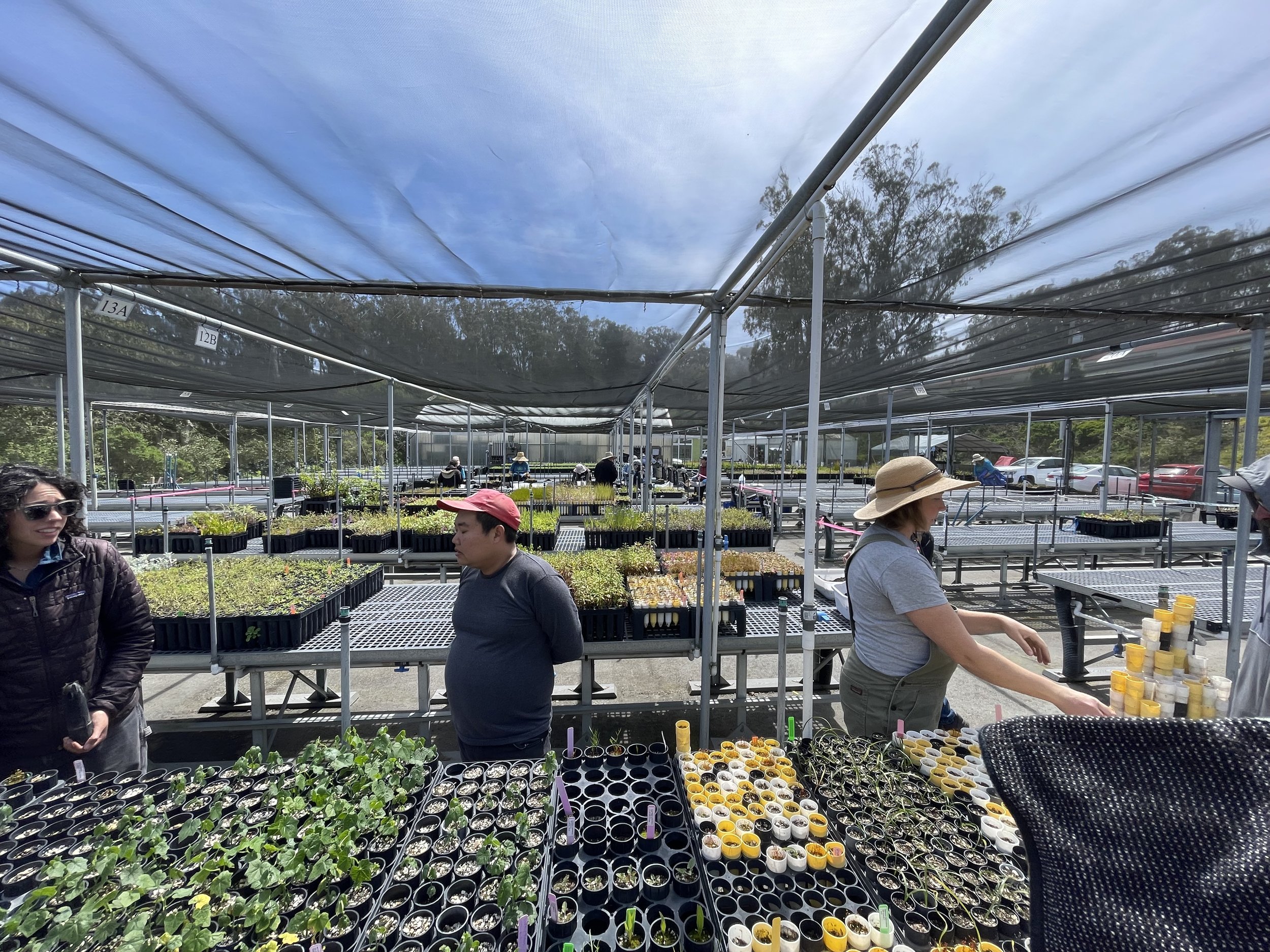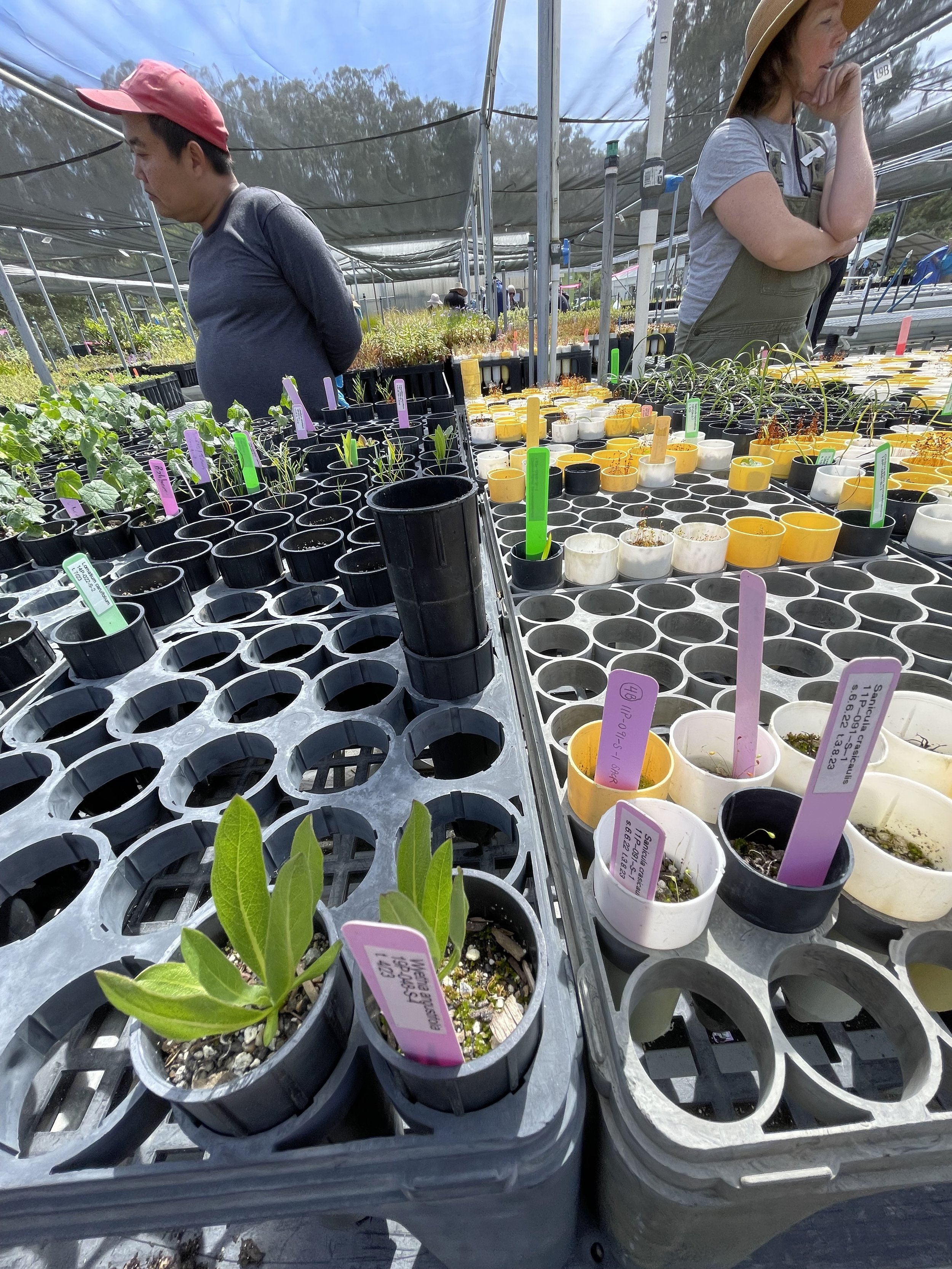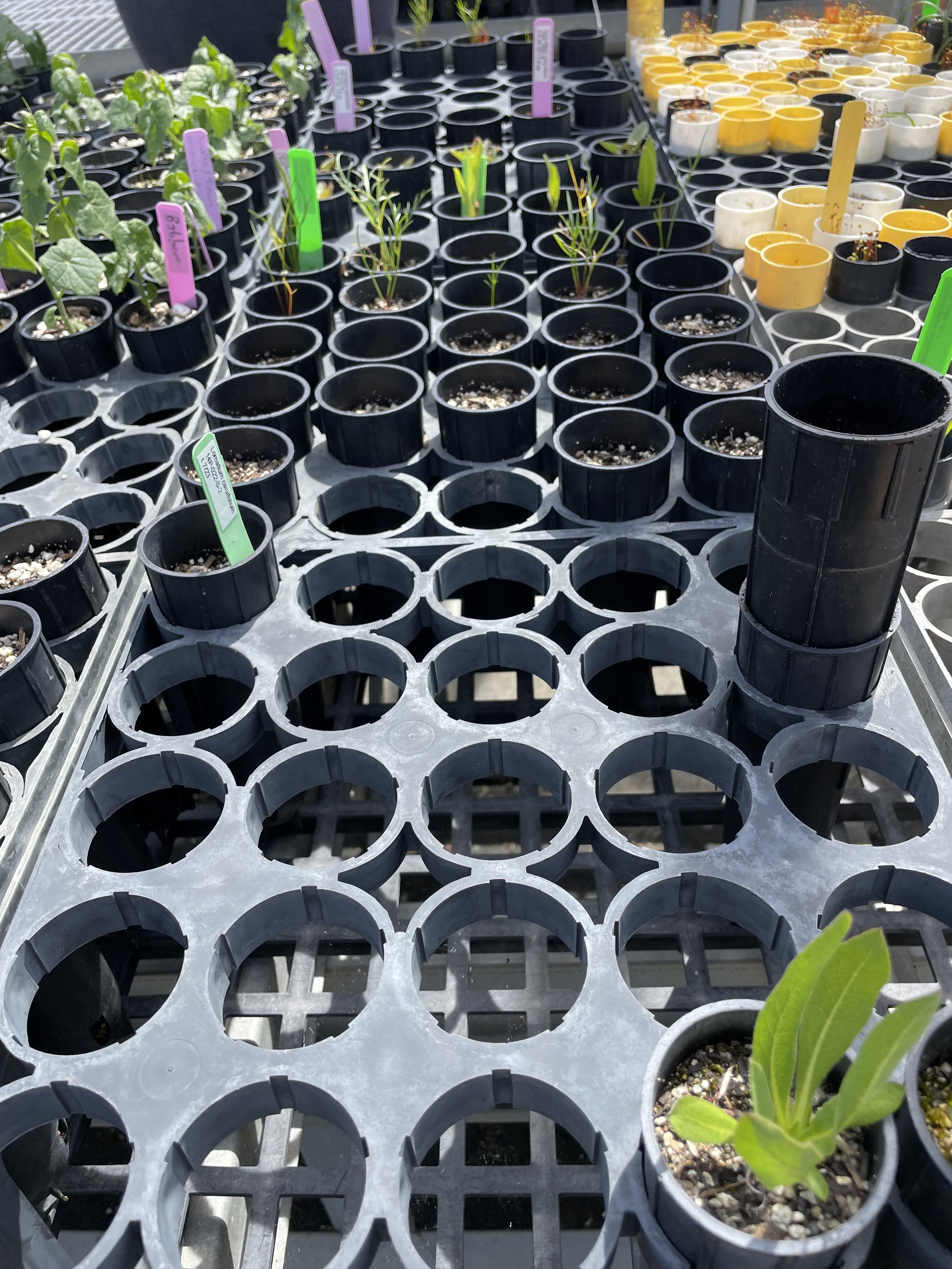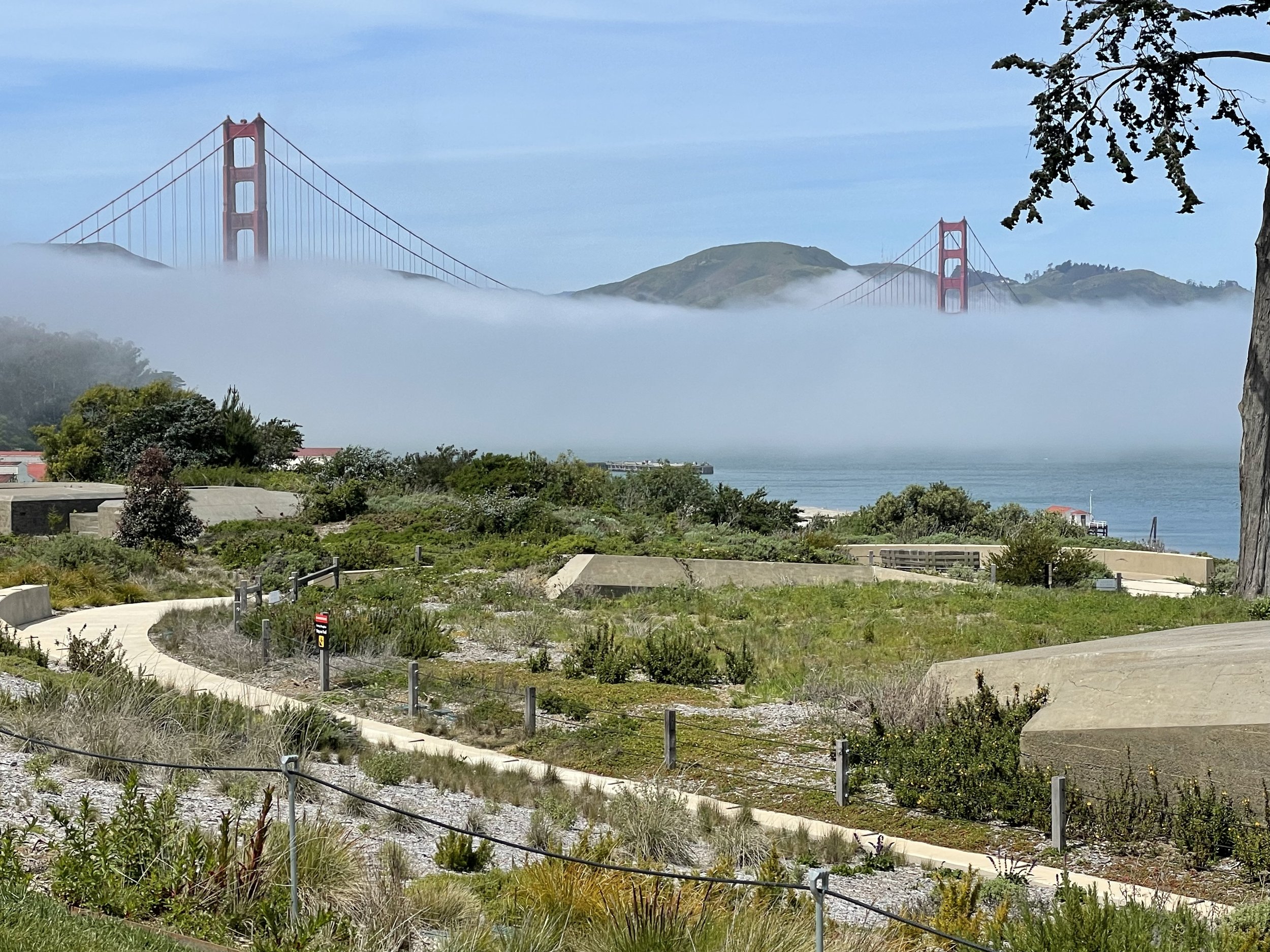Participated in the second annual citywide drill for 2025, at the new YMCA in Dogpatch. New skill practice: Hose Drag.
The Hose Tender rig you see here is newly custom-made for the department and features a 5,500-gpm pump and carries 6,000-feet of 5-inch hose. We’re pumping water out of the bay here, using the 3,000-gpm carbon fiber, hydraulically driven, submersible pump for situations where a tender may not be positioned close to a water source.
Tending a handheld 1.5 inch fire hose.
NERT Program Director Captain Brandon Tom welcomes the assembly of certified NERTs to this drill of Battalion-based teams. He asks if we felt the earthquake the other day.
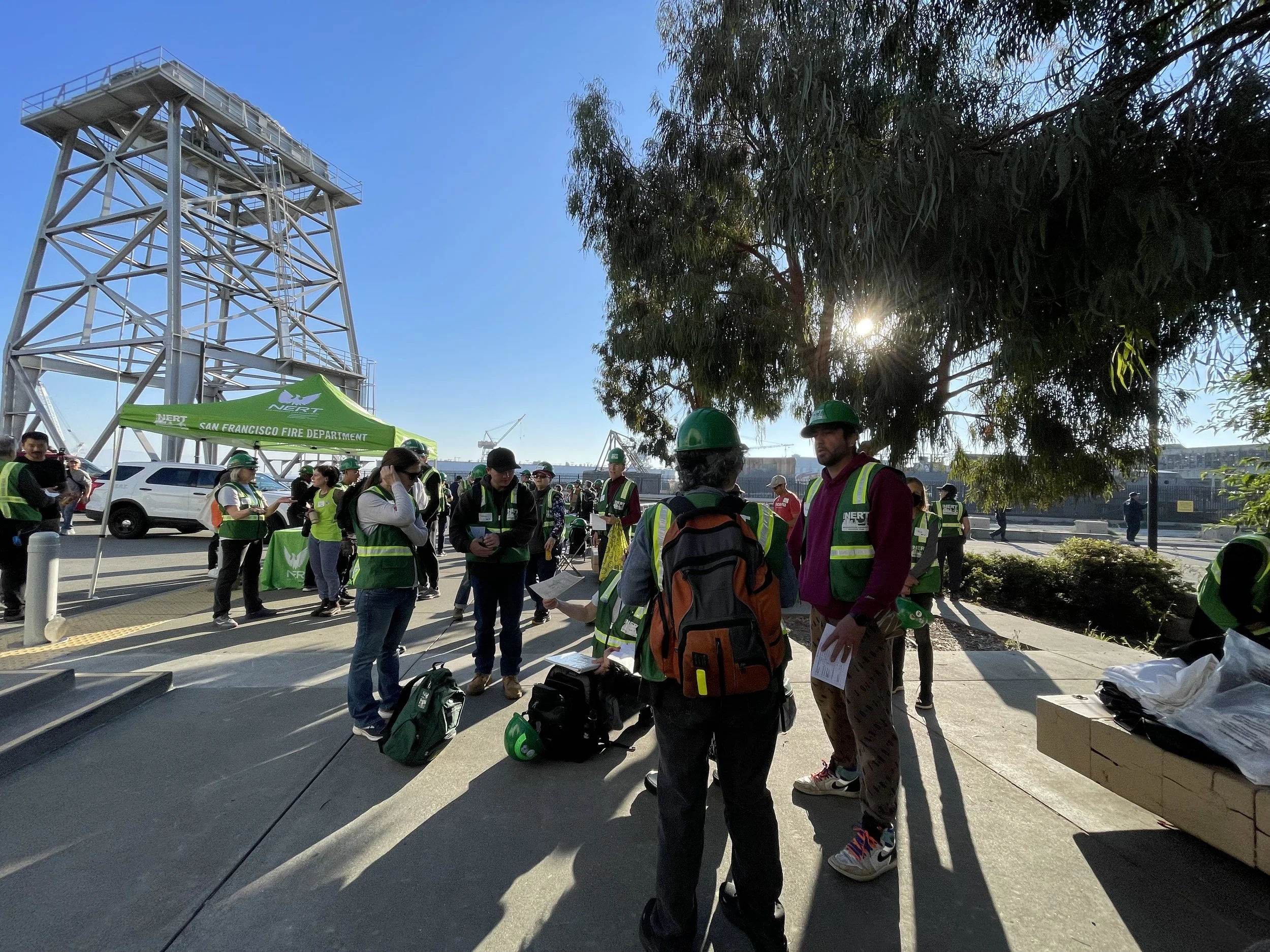
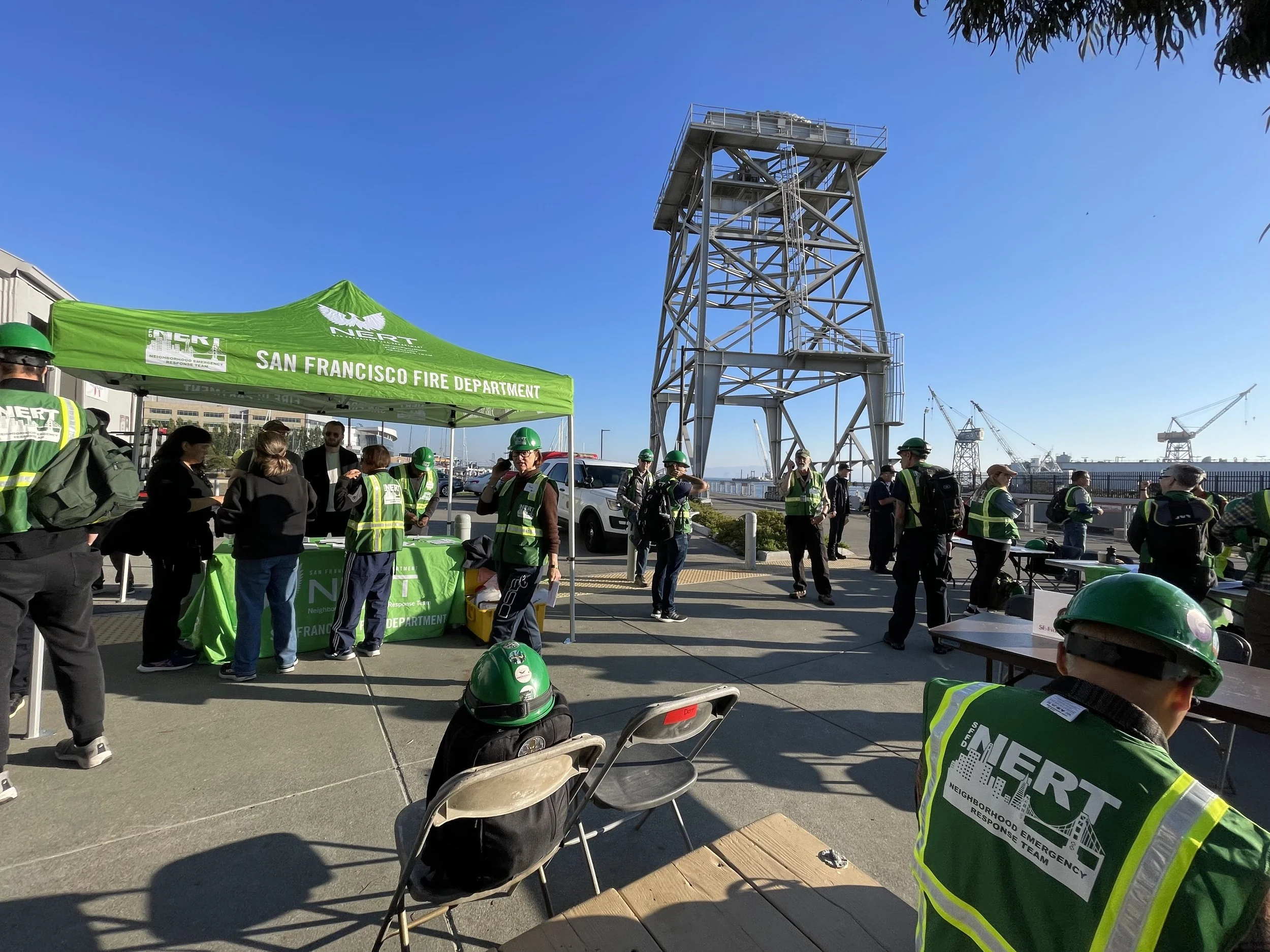
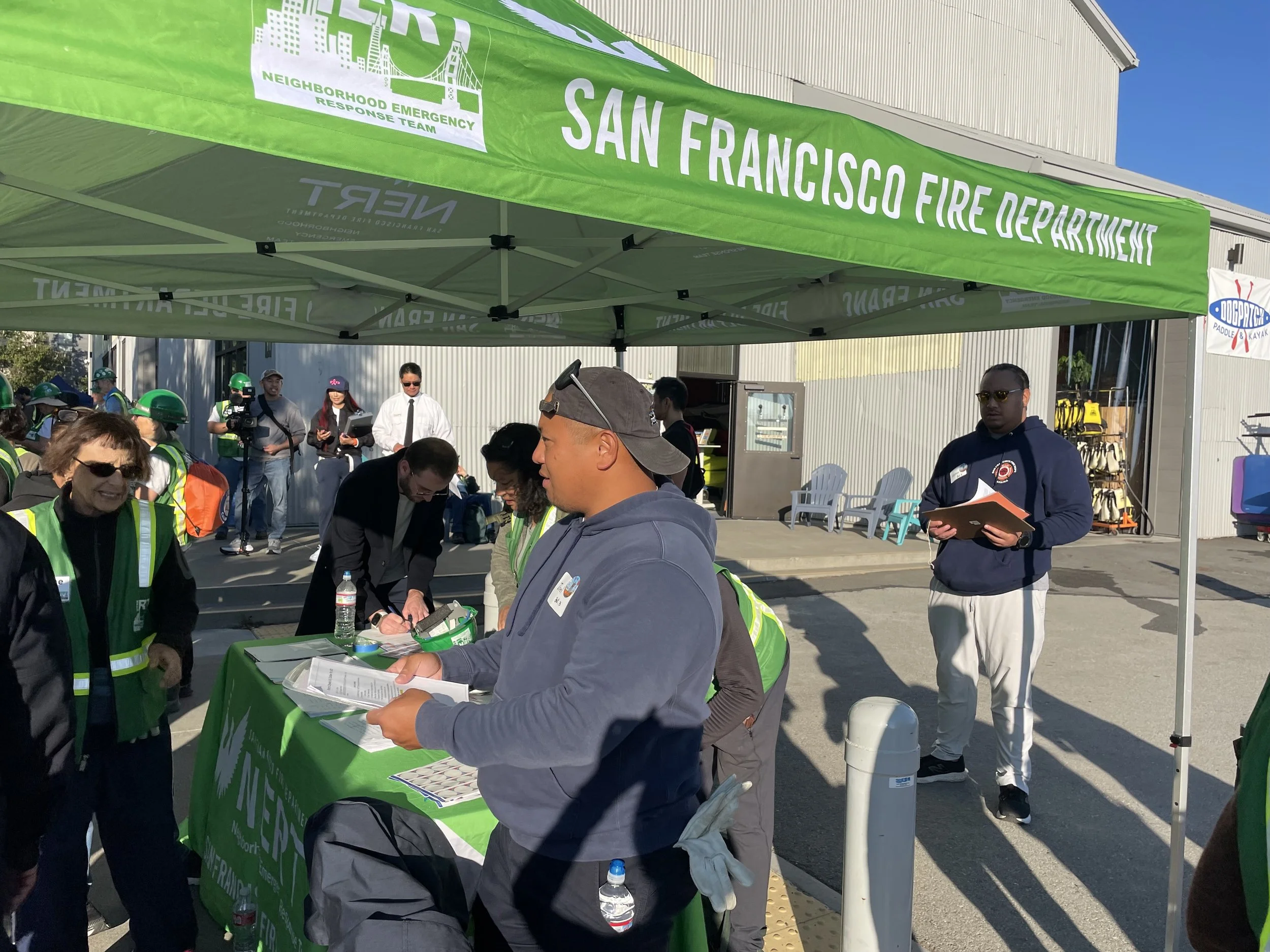
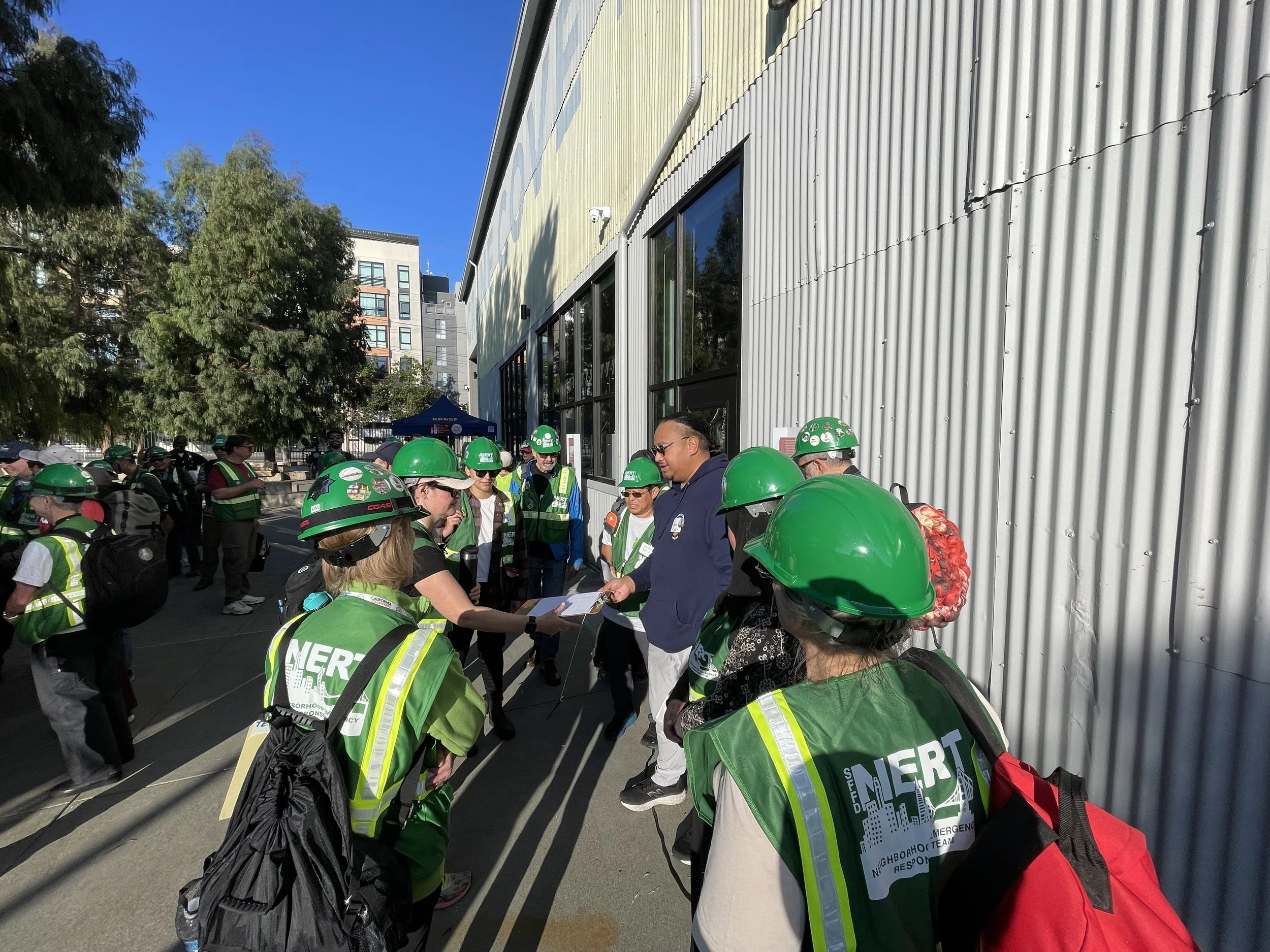
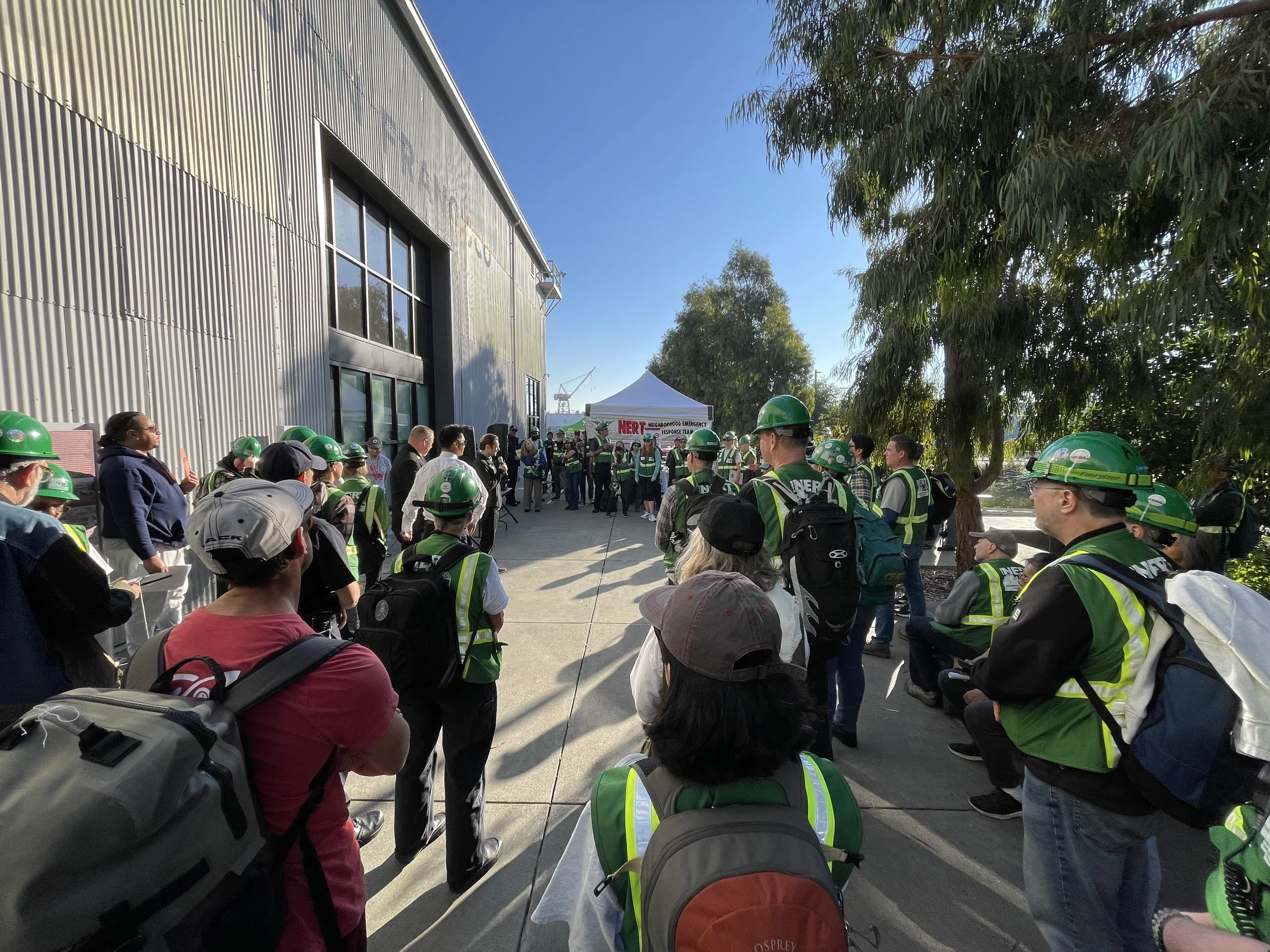
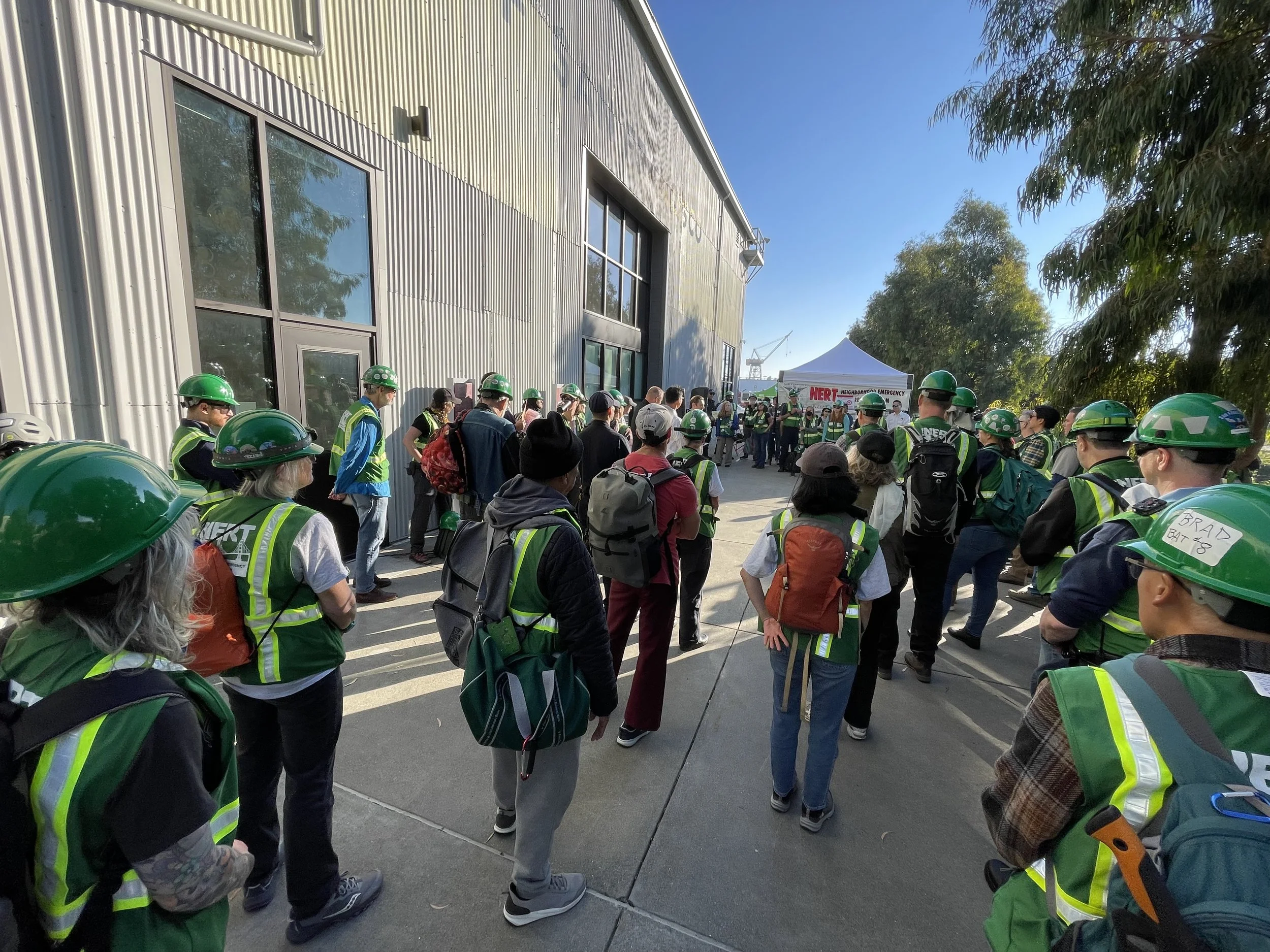
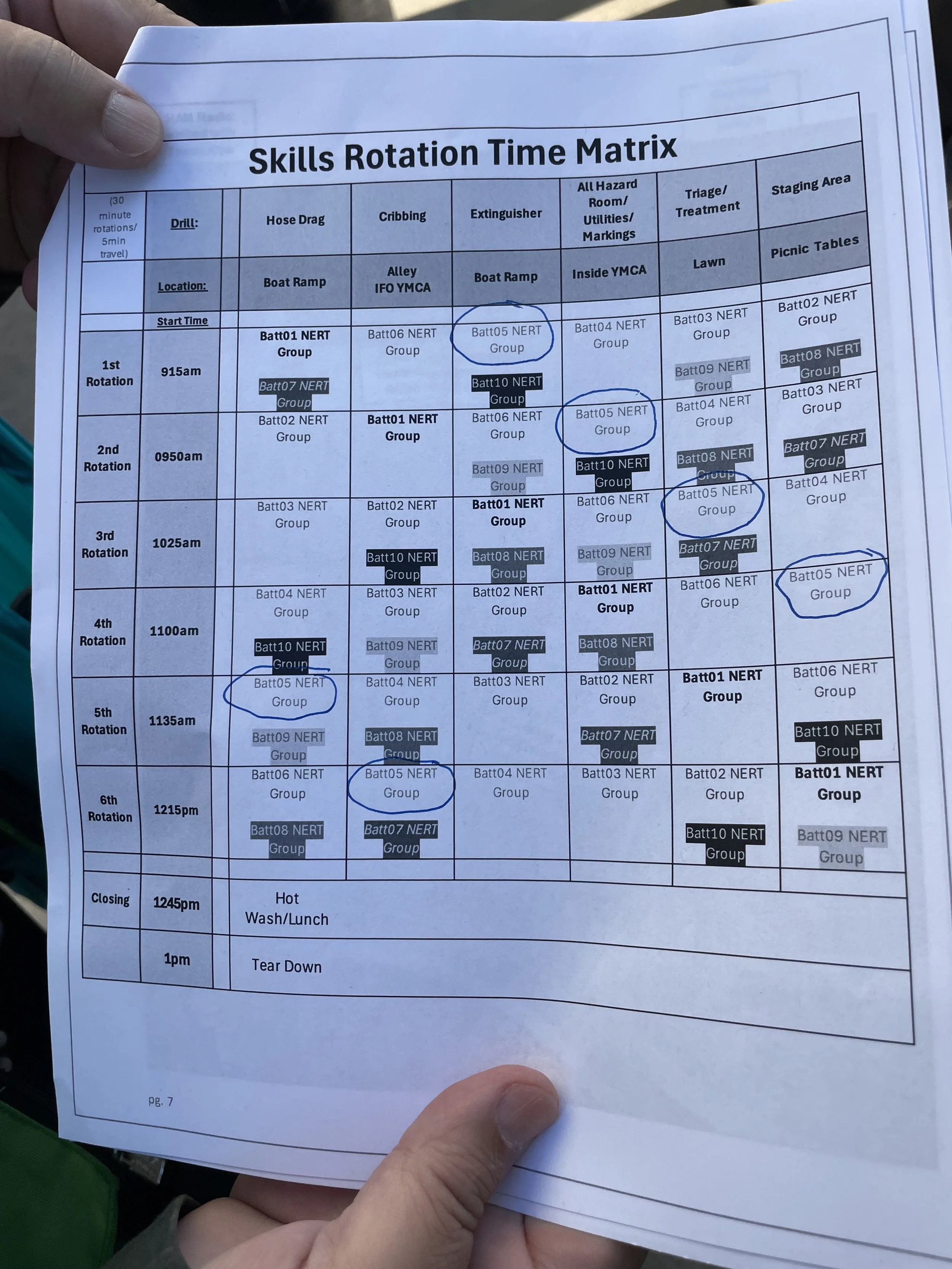
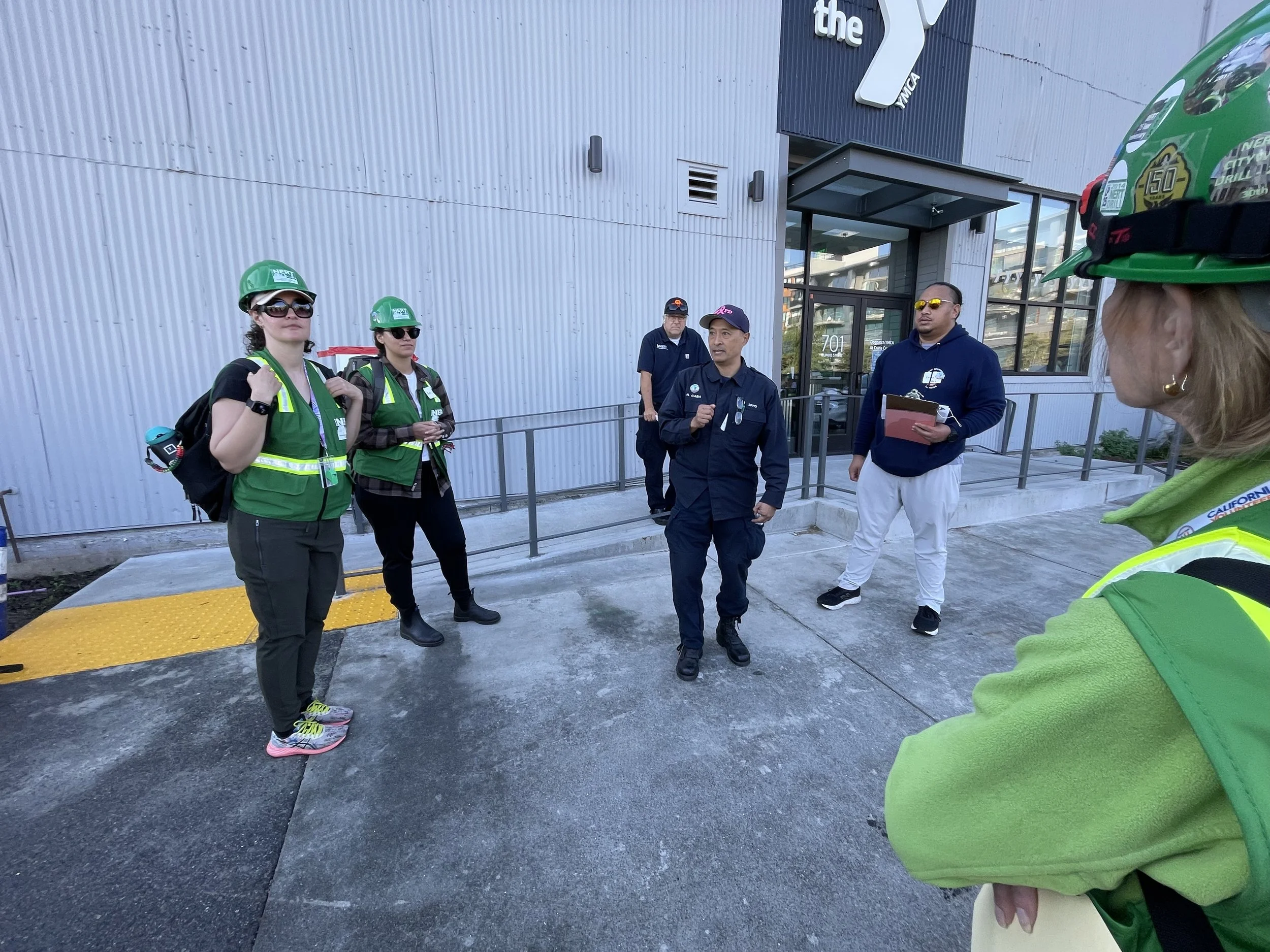
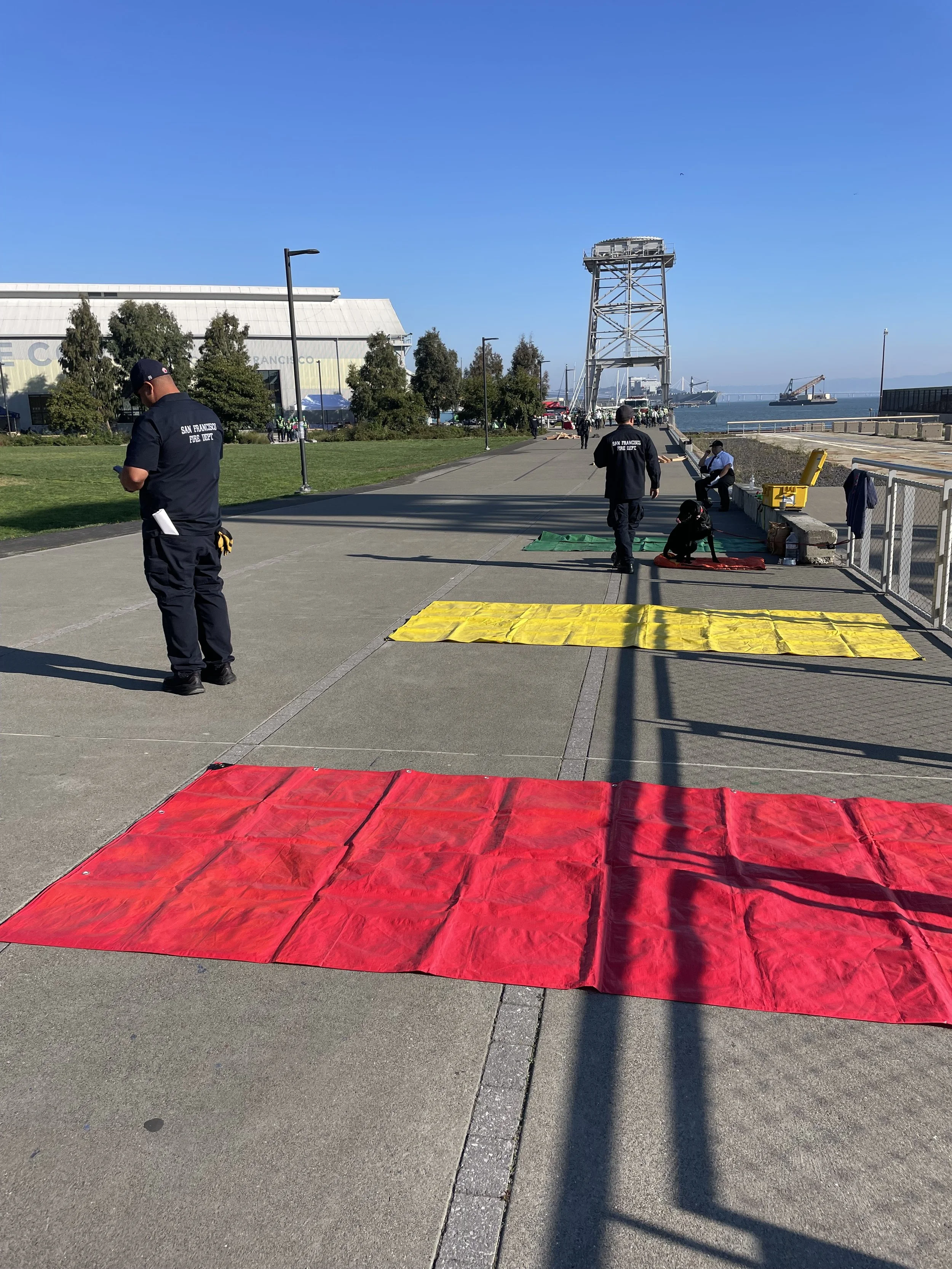
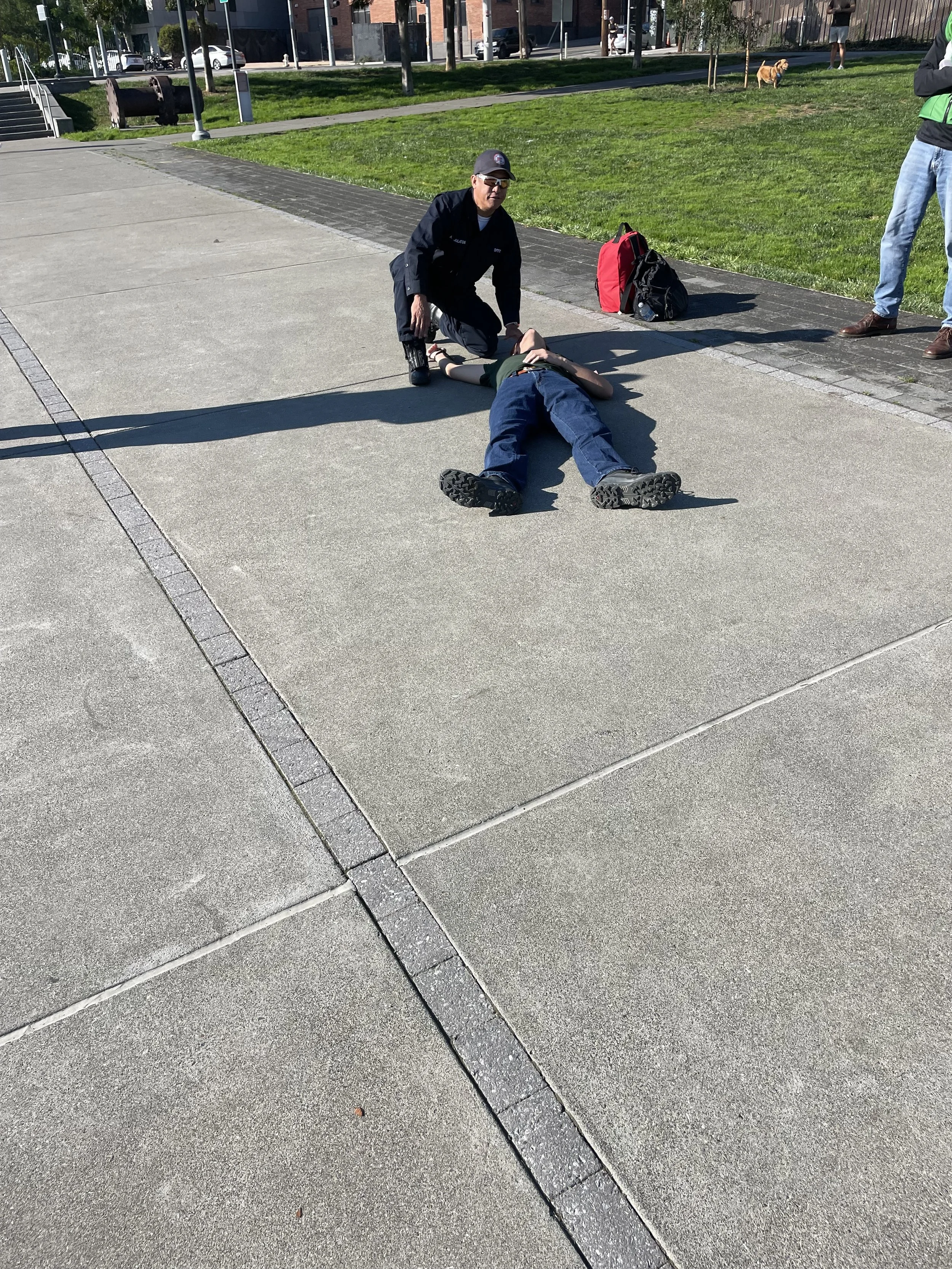
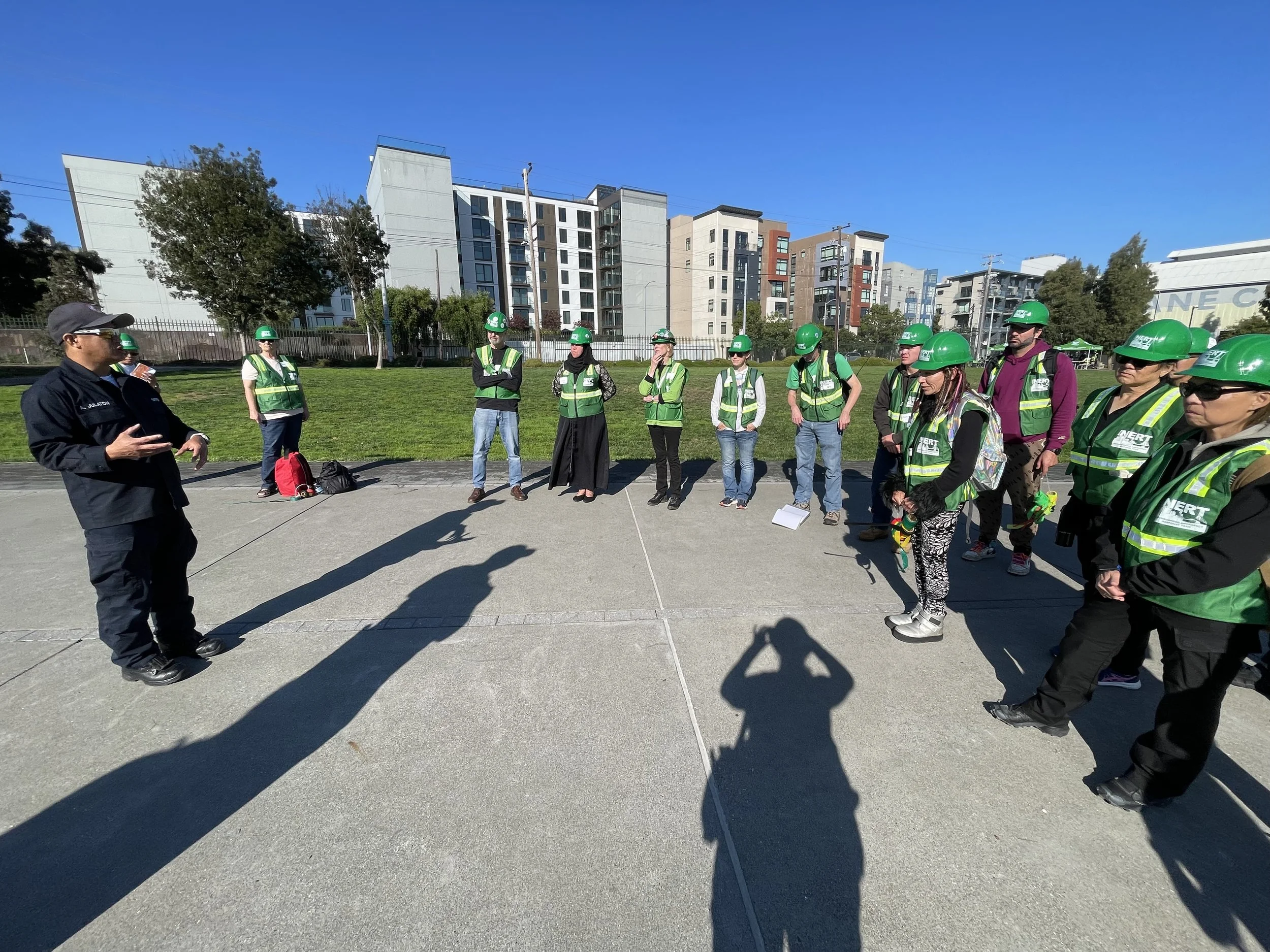
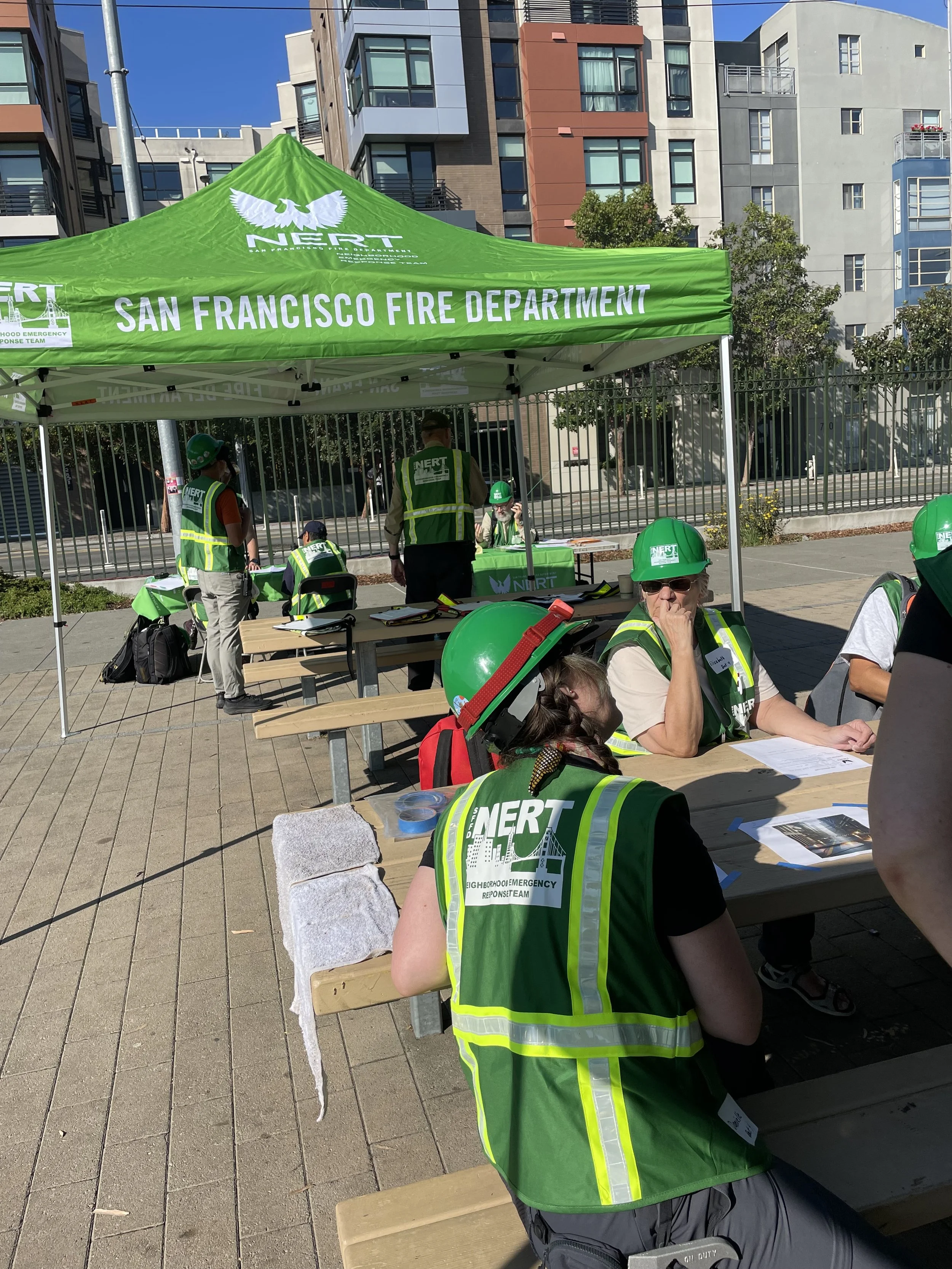
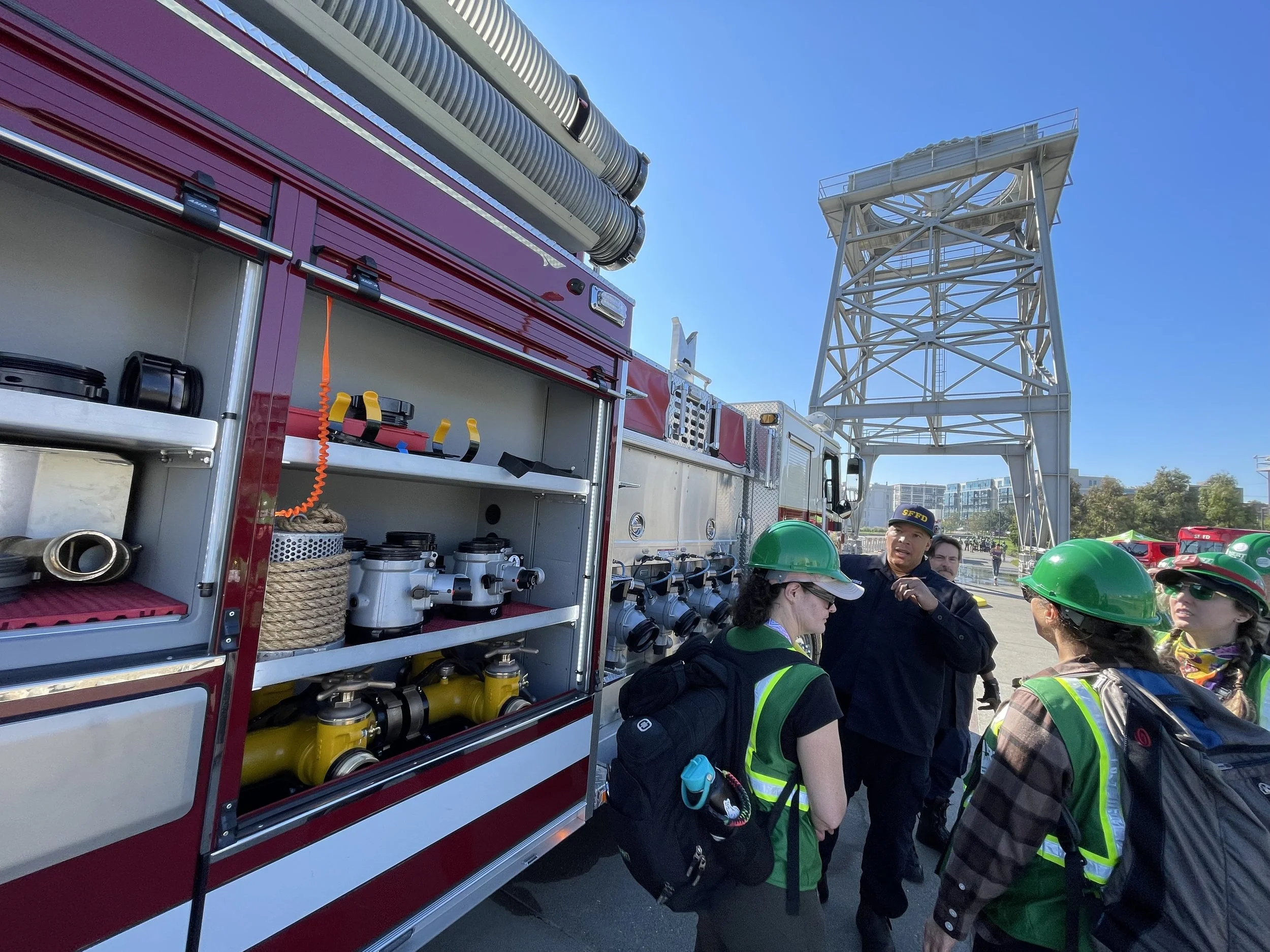
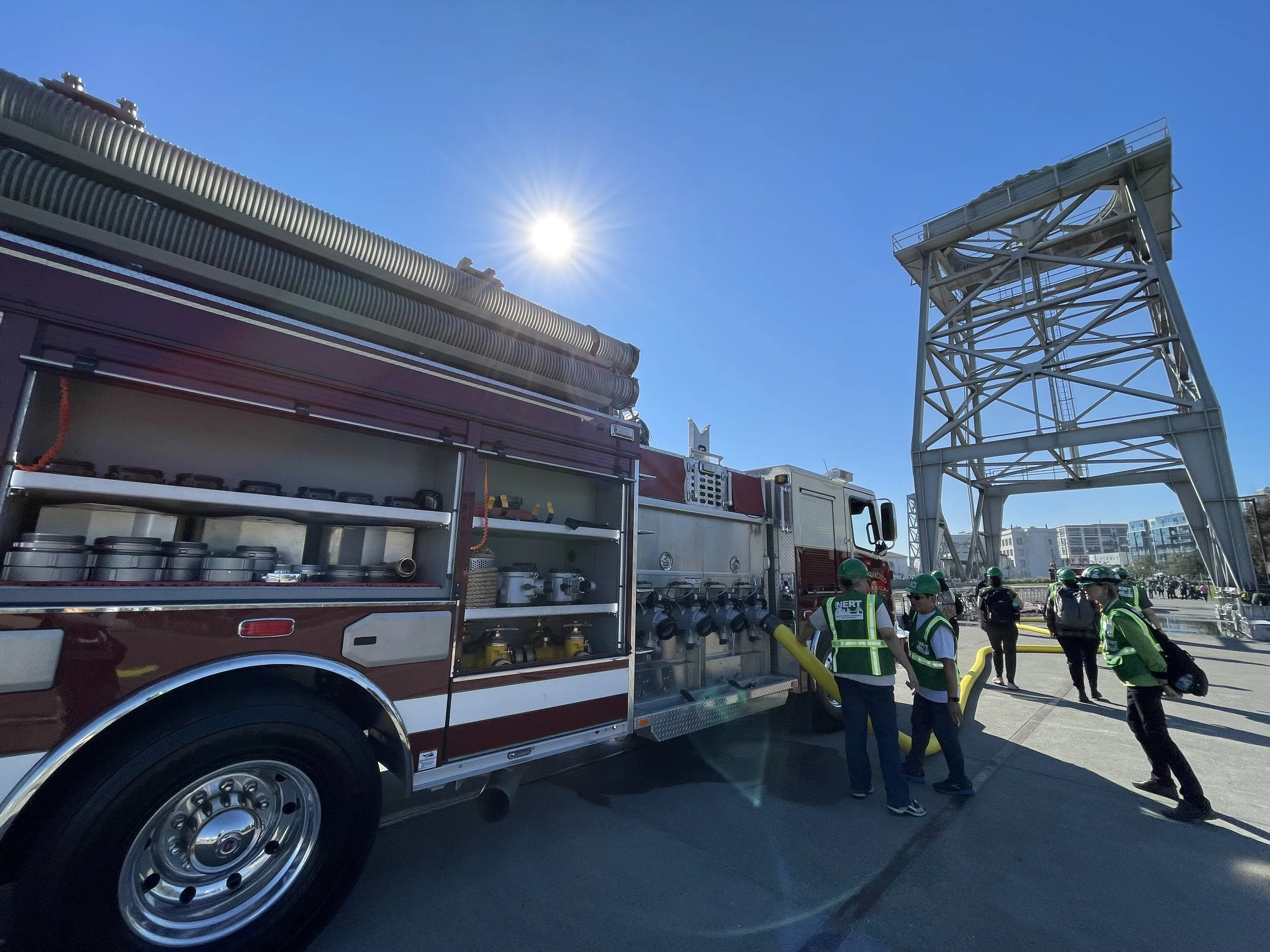
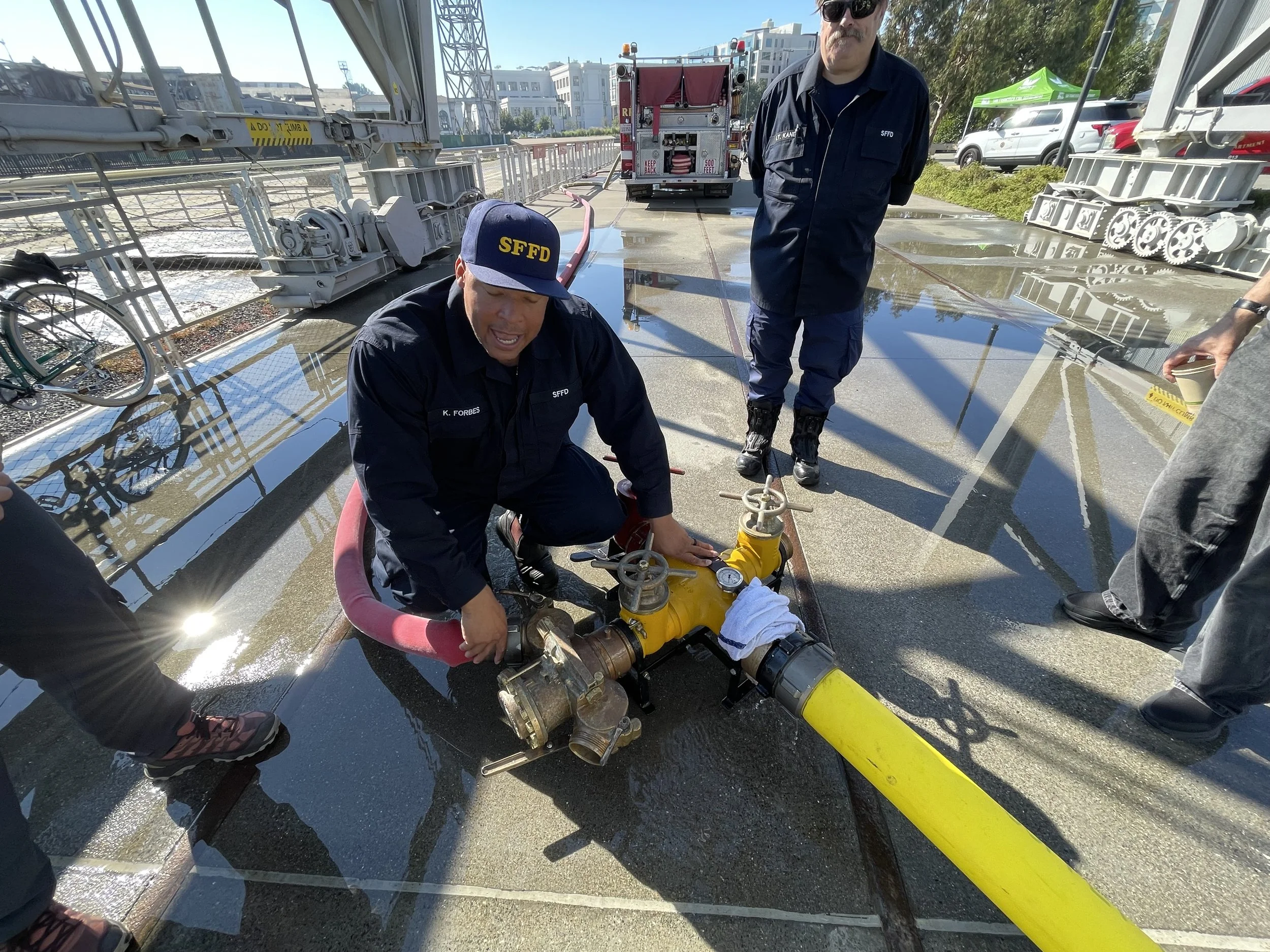
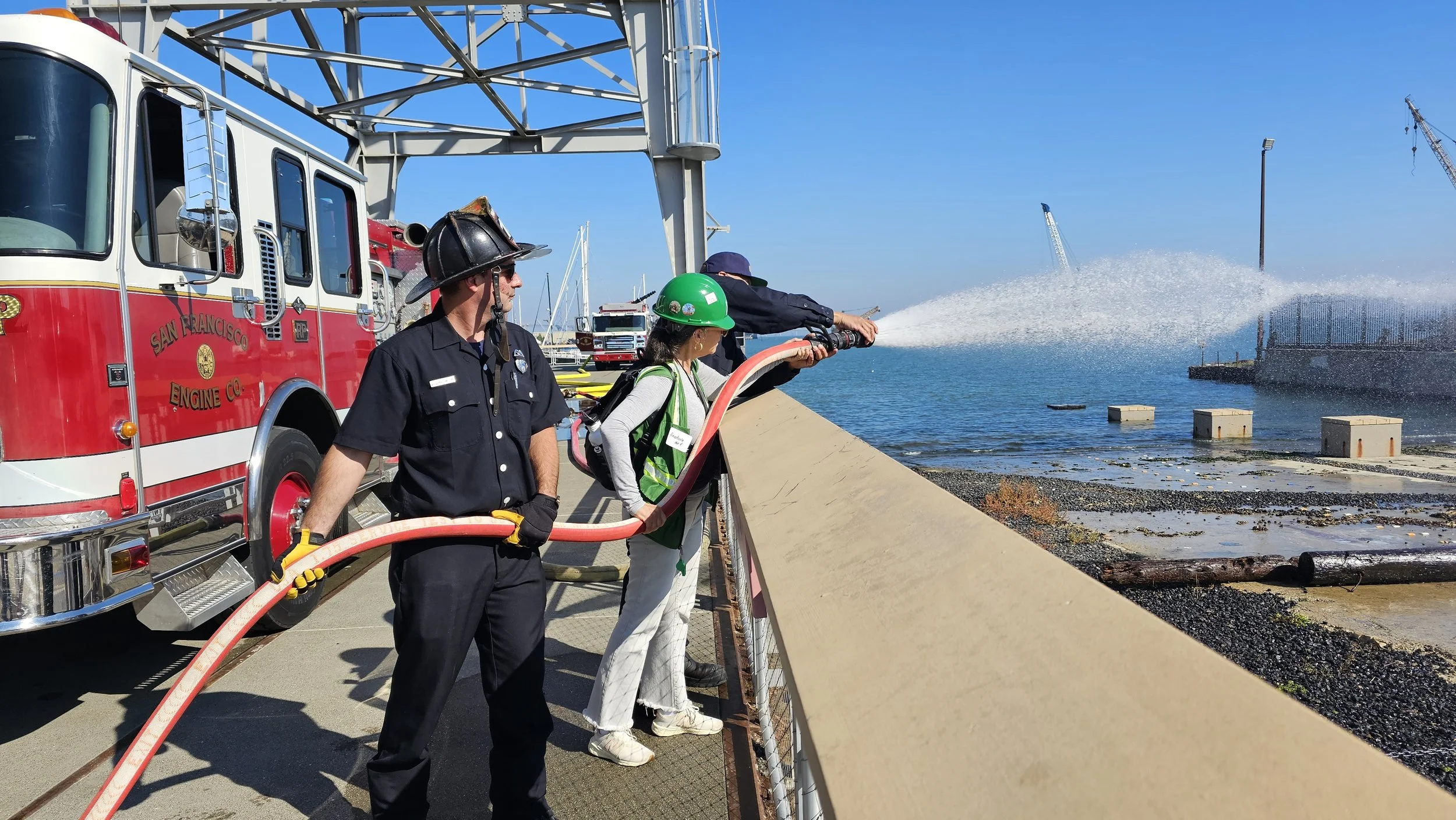
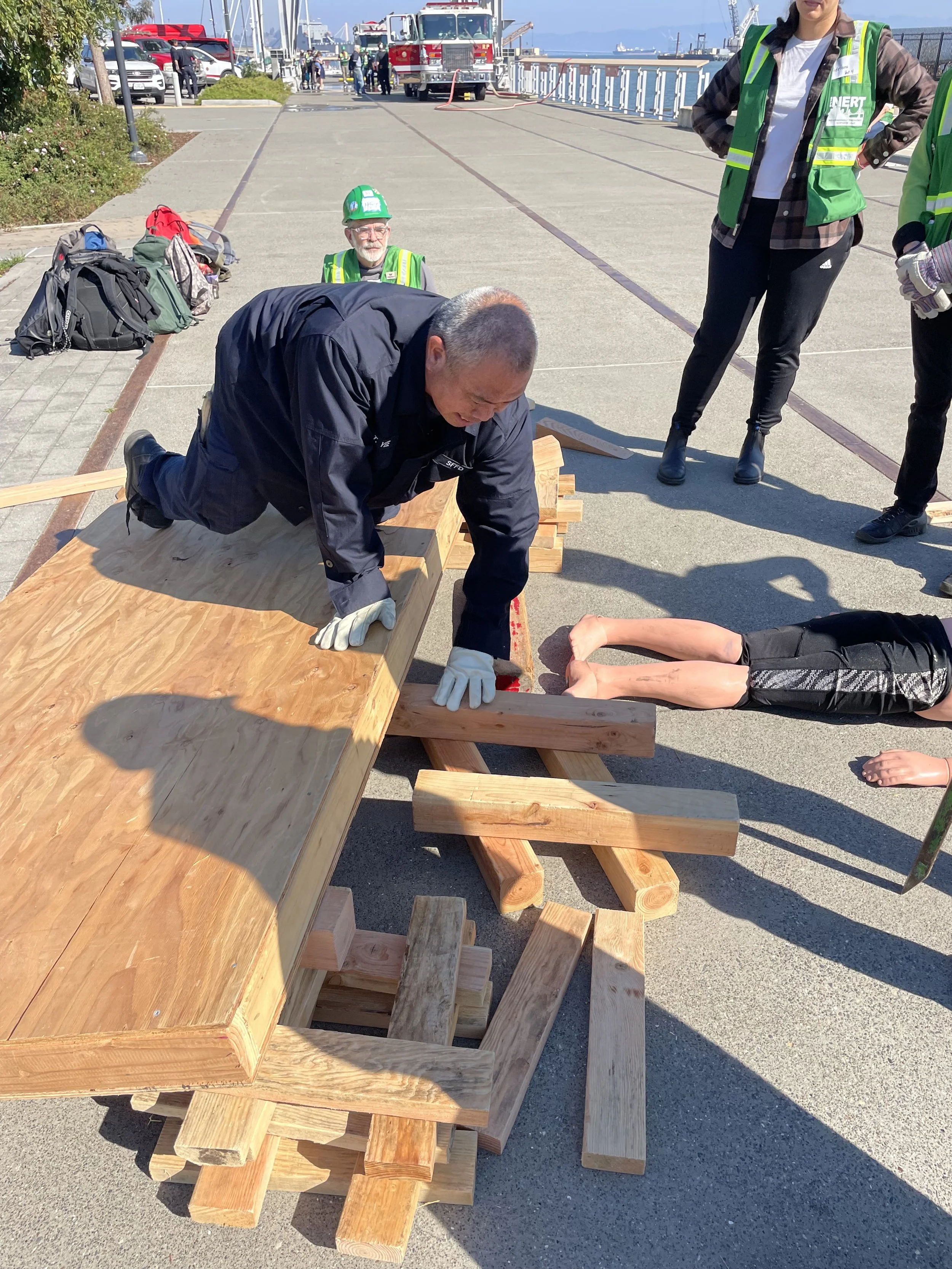
Practicing messaging during an incident, reporting key information to incident command with the LCAN format. LCAN stands for Location, Conditions, Actions, and Needs. A takeaway from this drill was that sometimes you have location, conditions, and actions but no needs. In that case, you log it at your own command and you don’t report it up the chain to battalion. Battalion only wants to know what we need, not what we’re finding and handling ourselves in the field. Later the activity logs will be filed. All these messages will be logged. Updates will be logged and filed. There’s a lot of paperwork and systems to learn.



